It's clear that we have, as a whole, a certain fixed fascination with the objects and machines that grant us what we perceive to be superlative experiences. Foundational ones, even. Those which set the bar, against which all other things of their like are inevitably compared.
Your first ride in a Bugatti Veyron. Feeling the F-15's scream over the stands, barely 1000 feet off deck. Firing a 700 Nitro Express.
Well, all of those things can move over, because I have this. It's a transcendental religious experience.
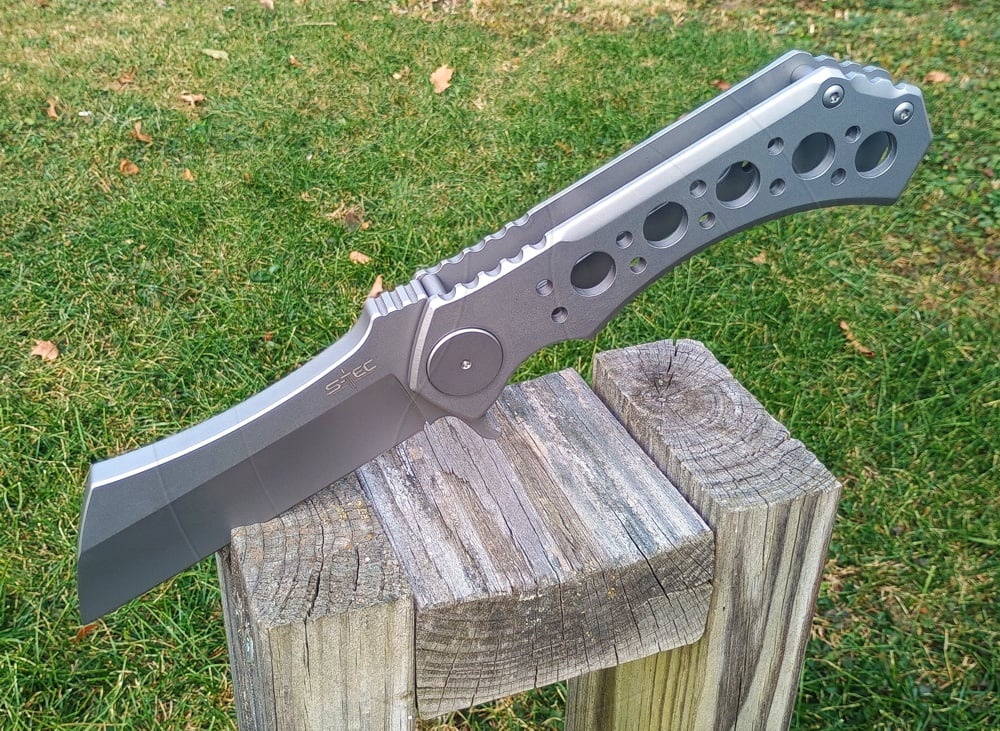
It must be, because every single person I've handed it to so far has immediately uttered the same two words:
"Jesus Christ!"
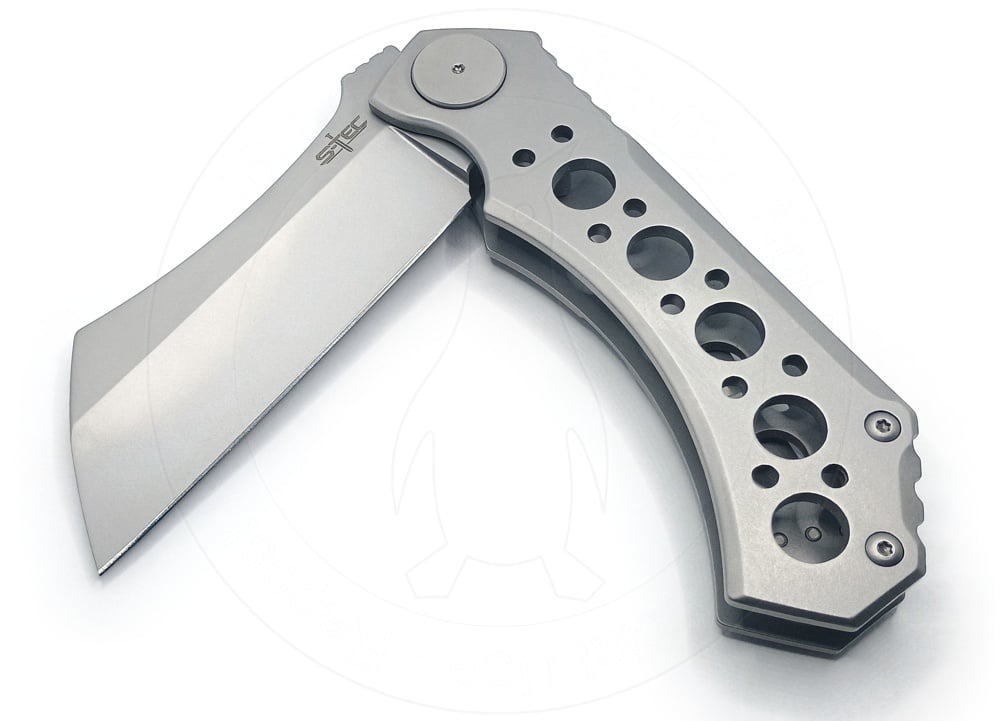
This is the S-Tec TS004M-SL. I saw it in the Top Quest catalog months ago, and from the moment I laid eyes on it I knew I absolutely had to have one. Come hell or high water, storms, locusts, tariffs, or recessions. It must be mine.
Just looking at it, it's easy to dismiss this as just another meritless run of the mill knockoff knife.
But, you see. Well.
No.

The Numbers
That only lasts right up until the moment you hold it in your hand. It weighs not a single whisker less than 459.4 grams. Normally at this stage I follow up with the same reading, but in ounces. Fuck that; This thing weighs just over one pound.
The TS004M-SL is 10-1/8" long when open and 5-7/8" closed. It's also 2-5/8" wide when closed, from the bottom edge of the handle to the peak at the top of the blade. It's gargantuan. It's now the biggest folding knife I own, and none of those specifications matter.

That's because its blade is 10 millimeters thick. Well, 9.92 if we're counting. But I have no problem believing that the slab of raw steel this was made out of was a full 10 before machining and finishing. That's over 3/8" of an inch. That's right, your truck is held together with bolts that are skinnier than this thing's blade.

It's phenomenally absurd.
This is the S-Tec, in the middle. To its left, a Zero Tolerance 0630. To its right, a Cold Steel AD-15. Both of those are massive knives that are considered by many to be simply too big to carry.
And the S-Tec positively dwarfs both of them. Whatever you have to say, whatever point there is to make, it's all irrelevant. Never mind that shit, here comes Mongo.

Just look at it. It's so hulking enormous, I couldn't even fit all three of those knives in frame when them laying flat. The S-Tec is too wide and crowds out the shot.
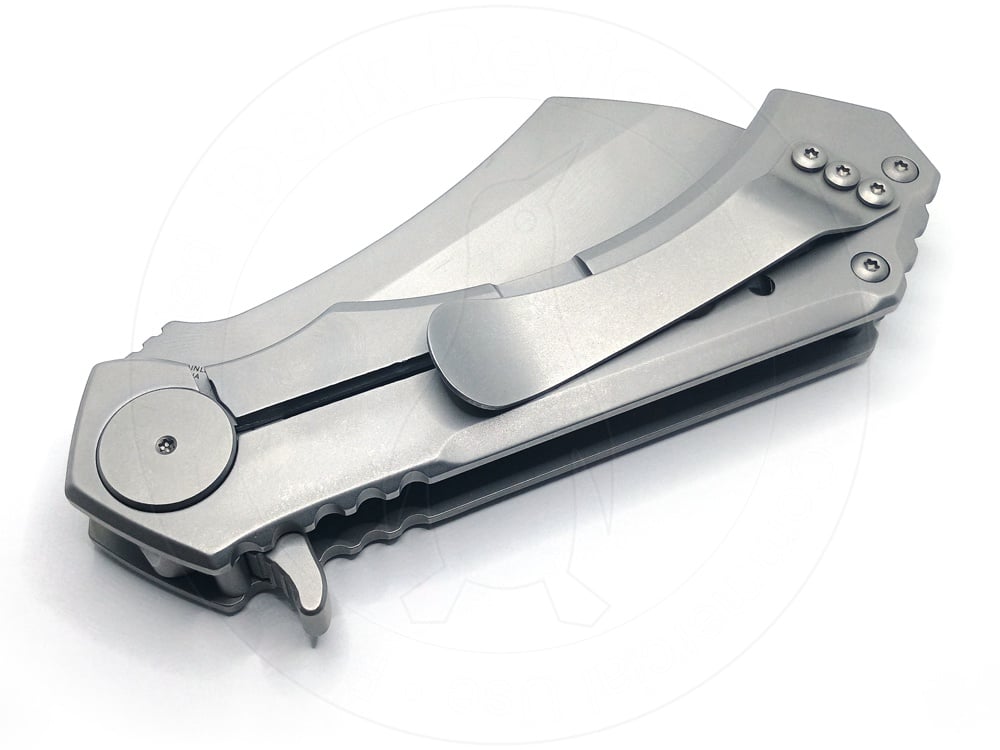
The TS004M-SL is a through-and-through flipper opener and lacks a thumb stud or fingernail nick. The latter really doesn't matter; If you want to open it via the traditional two handed method, there's obviously plenty of acreage for you to grab. There's the flipper on the rear for one handed opening.
Defying all logic, there is a pocket clip on the back side. It's not reversible, leaving only this one tip-up position available. Defying expectation as well, the clip is actually pretty good. On my example, at least, it has an excellent balance of retention and draw. It's not difficult to stow at all owing to its upswept tip, and you can pull it smoothy, easily, without snagging. And somehow, it still manages to maintain enough retention that if you dangle the knife upside down by its clip -- at least when I tried it just now, using the bottom hem of my shirt -- it won't fall off. If you're right handed the knife will stow such that the flipper isn't oriented so it'll catch on your pants, either.
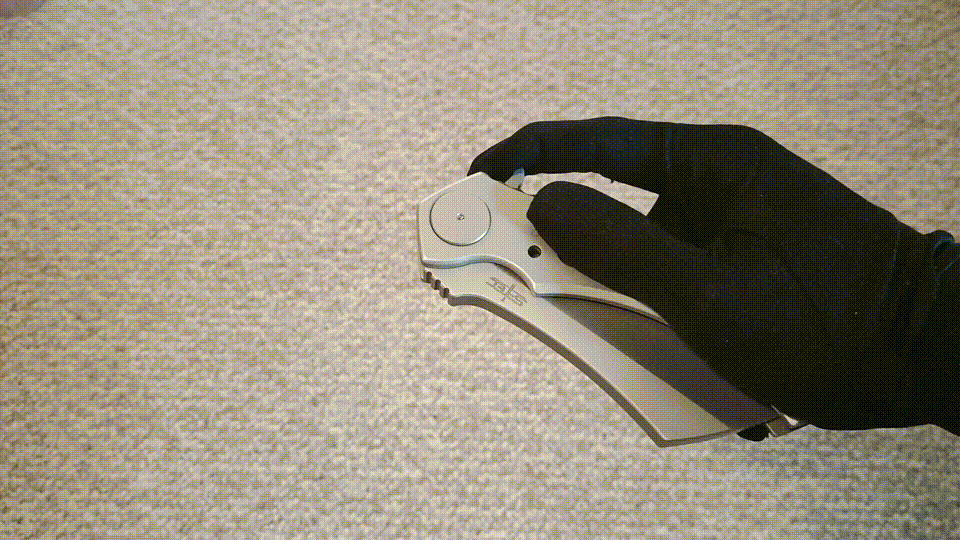
It's not only a flipper opener, but a ball bearing flipper opener. That fact alone instantly makes it like 30% more awesome. There is a rather strong detent built into the frame lock, done the traditional way, but once you overcome this the blade will easily fly or even just fall open of its own accord owing to the low resistance of the bearing pivot and also its own massive heft.
The chances that this will fall open in your pocket without your intervention, at least until the detent is significantly worn, appear remote. But I will point out that it is just barely possible to get the blade to swing out by holding the knife upside down and shaking it very vigorously. So maybe the possibility is there, but even so it seems unlikely you'd have a pocket big enough to allow this thing to open very far.
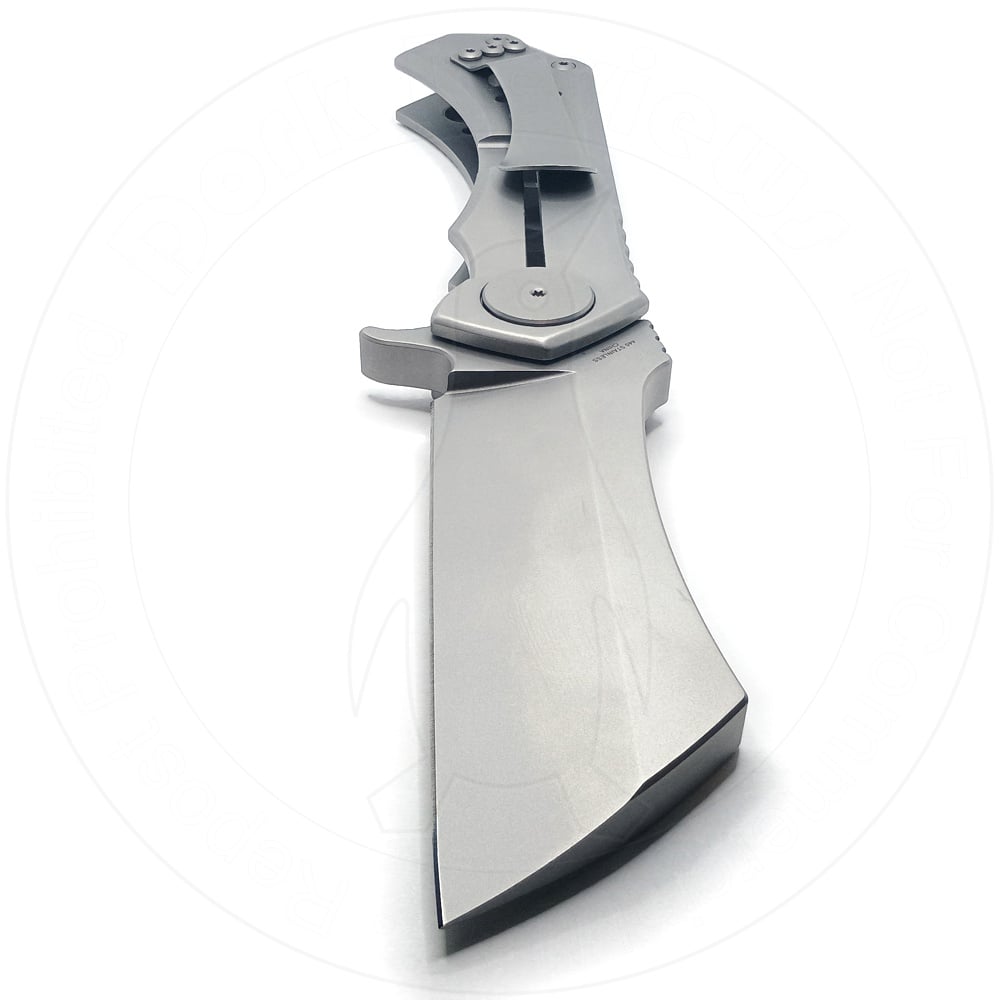
The blade is a Wharncliffe or possibly pseudo-reverse-tanto design and is hollow ground. It is not, unfortunately, a full flat or convex grind. Nor is it a distal taper all the way down to the edge, which would have been phenomenal. But given that this retails for a paltry $35, none of the above was ever going to happen. And as you'd expect, the blade is only 440C. For this price, you certainly aren't getting this much of anything else.
All of this is a trivial price to pay for the knowledge that you can easily demonstrate to anyone that their knife is made for knee-high pantywaist girly men, no matter what it is or how much they spent on it. Chris Reeve, Zero Tolerance, Emerson, or Benchmade? Ha! None of those could crush a soda can flat by smashing it with the spine of the blade, could they?
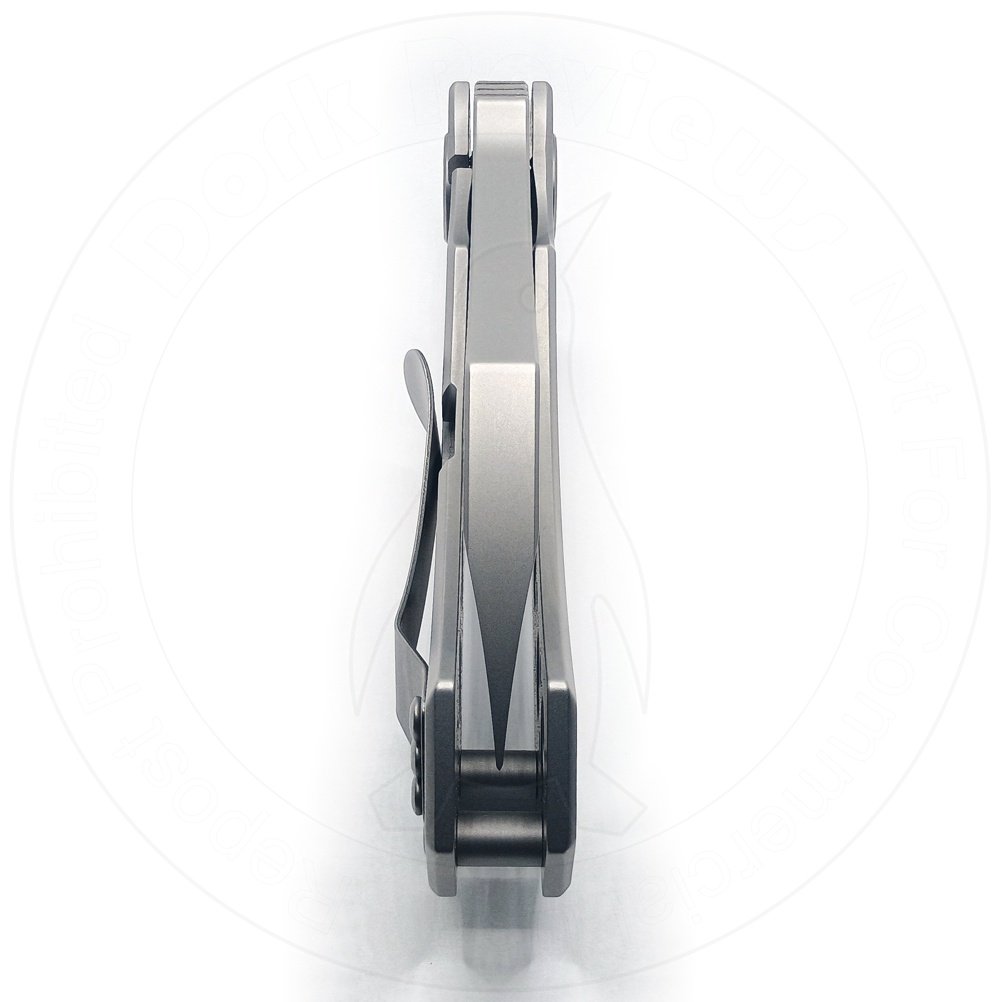
And then, TS004M-SL has remarkably competent build quality. Superficially, at least.
The blade centering is nearly perfect. There's no perceptible lash or wiggle in the blade when its locked open in any direction, which probably isn't too surprising owing to the ball bearing pivot. The handles are pretty simply machined but they're done so nicely, with no blemishes, apparent casting flaws, or pock marks -- even on the back sides where you'll never see. The only rough bit of finishing work on my example is on the inner face of the slot in the frame lock, which is barely noticeable given that it's also concealed under the clip.
You can get this in multiple color variants. Well, "silver" and black, anyway. Mine is the "silver" version which is actually an attractive grey satin finish that appears bead blasted, but I suspect is helped along with some kind of paint or coating. It feels great, but somehow has an uncanny ability to pick up and show fingerprints.
Dork Smash
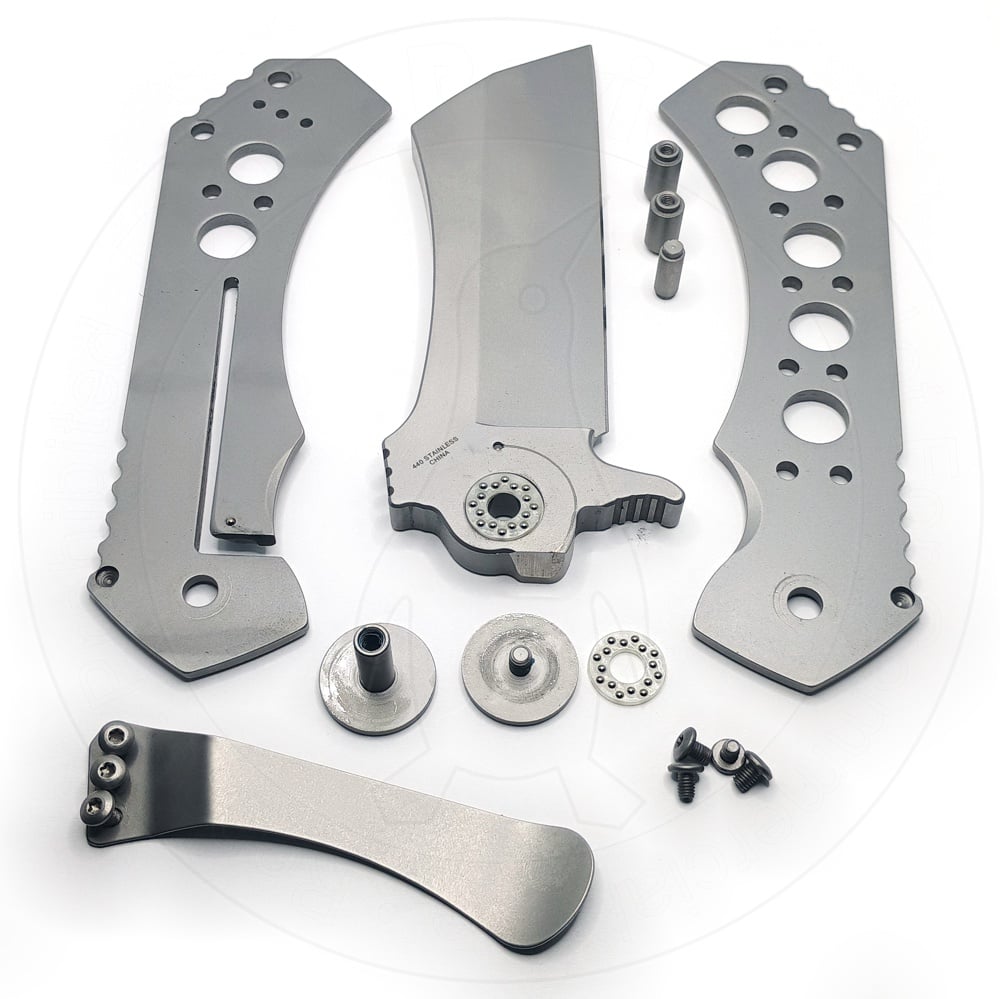 is
is
Imagine my surprise when I found out just how easily the TS004M-SL can be disassembled.
Usually with cheap and nasty Chinese knives their nature becomes readily apparent as soon as you take a screwdriver to them. You're bound to either find screw heads stripped at the factory, one or more screws glued into place so firmly they won't come out, or maybe even a couple of them cross-threaded but reamed in anyway. It's always as if the Chinese are pathologically incapable of just doing it right all the way through.
Well, I didn't find any of that. Every screw on this thing is a regular T8 Torx head and they all just... came out, normally, without any fuss. And they all went back in again, too. I know that's not a high bar to clear, but a lot of the time whatever I have on the bench can't even manage that.
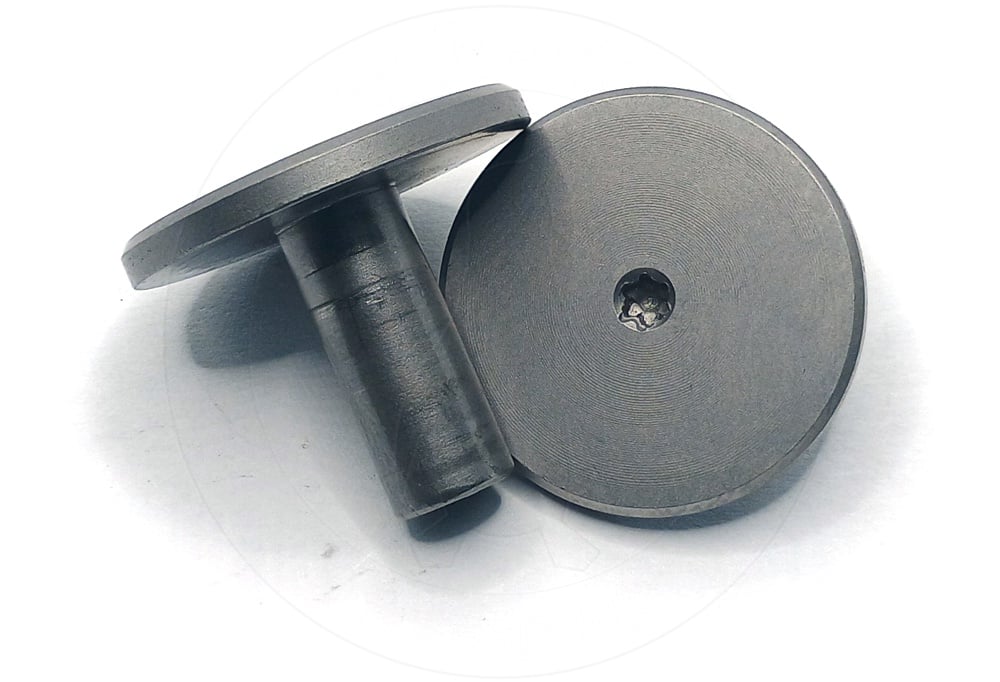
The heads on these pivot screws are the widest I've ever seen in my life. I've said that before, taking apart various fat knives. This time I think it might stick. They're easily 3/4" across -- slightly bigger than a penny.

The pivots on this are so fat that it's the first time I've ever seen thrust ball bearing carriers like there where there are two concentric rows of balls. The blade is pocketed nicely for the bearings, whereas the inner surfaces of the handle slabs are just flat. It all fits together and works fine.
Okay, so there's no anti-rotation flat on the pivot screw. Big deal; just stick one T8 in each side and twist. You can't get it wrong. You have got two T8 drivers, haven't you?

All of the hardware is a standard M4 thread pitch which, to be fair, is one metric size up from what we usually find. If I were a gambler I would still predict that the point of failure on this will inevitably be the screws, since the ridiculous thickness of the blade will surely entice careless users to try to use this as a big fixed blade or even an axe rather than a folding knife. Batoning firewood, chopping trees, prying crate lids, and all the rest of that may ultimately wind up in this knife's superficial beefiness tempting the user to write checks the hardware can't cash.
The two handle halves are separated by a pair of thick (7mm) threaded barrels that are also shouldered and drop precisely into their drilled holes, which should help with their strength. The end stop pin is also shouldered and just rests in its holes, with no screws.
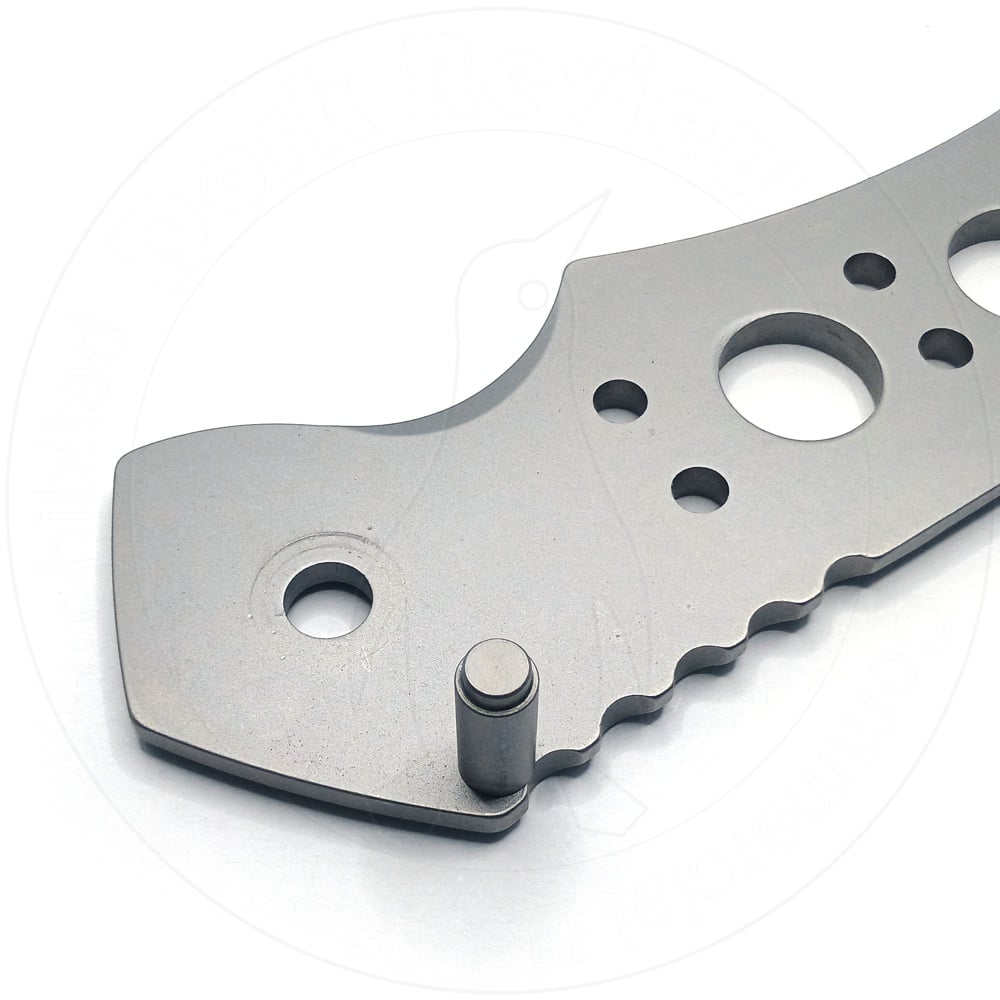
It's also distressingly close to the edge of the handle slabs. Possibly close enough that there isn't enough meat left behind it to prevent it from eventually breaking free after many, many bashings of that heavy blade against it. Only time will tell.
Using The Thing
The manufacturer of this -- S-Tec, Top Quest, whoever they are -- market the TS004M-SL as a "cleaver." That says maybe, although its monumental heft should definitely help it excel at chopping tasks just from a physics perspective. Anything you bring this down on is likely to know about it, and remember.
But there's very slight, small, tiny, teensy-weensy, massive problem with the ergonomics if that's the intended use case. I'll illustrate with the long edge of my Official Block o' Wood, what with I normally sink knives into for those cool action shots:

If you're cutting against a flat surface, you know, like how normal people typically do it with a cutting board or what have you, the flipper is completely in the way.
Normal cleavers have their handles mounted up high at the spine of the blade precisely for the purpose of leaving the full length of the edge unobstructed, and also to provide the maximum amount of cut depth they can achieve without you whacking your knuckles on the work surface. But the TS004M-SL doesn't do that. At all.
Instead, this is laid out more like a typical general purpose pocket knife which to some extent rather defeats the purpose. Now, it works just fine for any task that doesn't require working against a flat surface or, if you can manage it, by positioning your work at the edge of a table or what have you so you can keep the handle in empty air. But failing that you actually can't get any significant length of the edge onto your worktop, so you're left smashing things with the last 3/4" or so of the tip.
There's also the issue of the blade geometry, which is a bit limiting as well. For instance, the chopping-on-a-surface issue could also have been mitigated by giving the blade a strong upsweep, but that's what it hasn't got. There is a very slight belly to the edge but overall it's near as makes no difference to straight.
Zombies, then, you say.
Fair enough, and the TS004M-SL is pretty fast to deploy with its bearing pivots and the long flipper heel doubles as a better-than-nothing forward guard. But the Wharncliffe profile means its stabbing performance will be utter bollocks, and that's going to limit you a lot. Your best bet is hoping a potential assailant wets his pants in terror at the sound of that 10mm thick slab of steel clacking into place and simply runs away. Which, to be fair, he might.
I'll also point out that the position of the endstop pin and its attendant notch at the base of the flipper cause the blade to stop well short of how far it could actually be folded into the handle if it were designed a little better. Like, to the tune of probably over half an inch, which'd make the TS004M-SL much easier to carry. Just moving the flipper forward a couple of millimeters would probably have done it.
The Edge
Guess what.
I got one of those stupid portable digital microscopes.
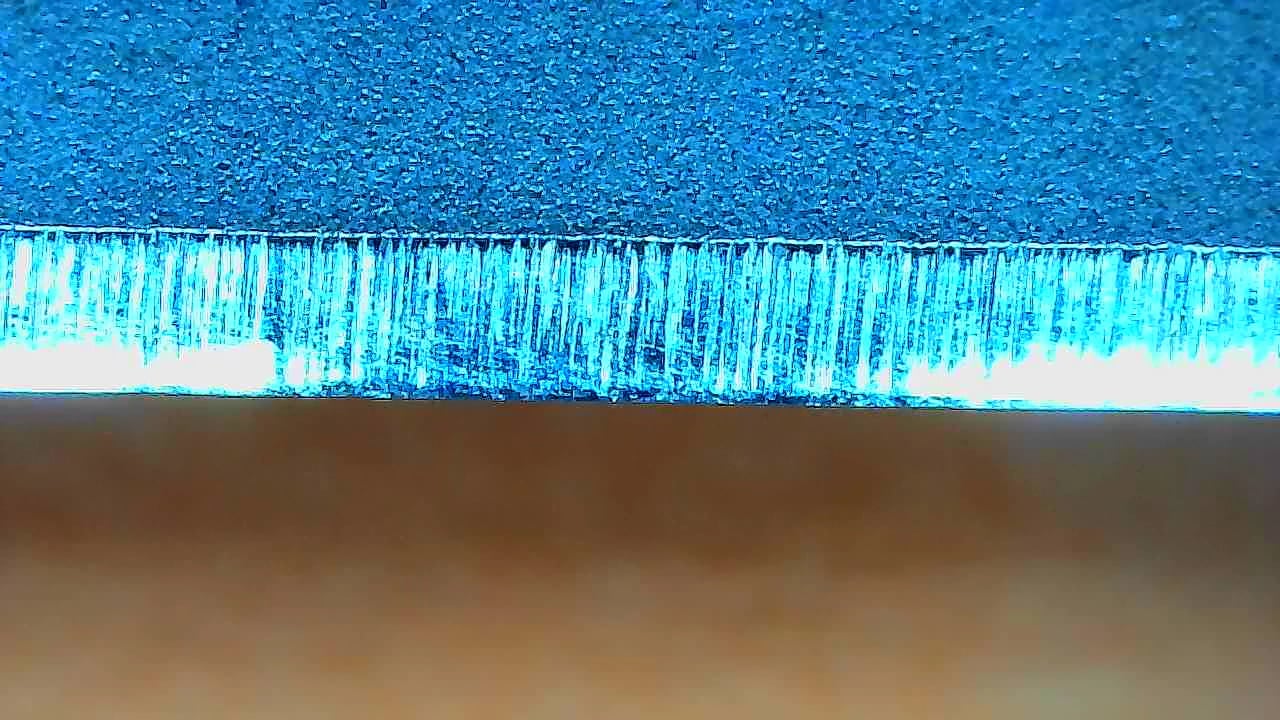
Calling it a "microscope" is really a bit of a stretch. It's more of a webcam that's just capable of focusing on things stupidly close to the objective. But it lets me get all Wayne's World up in the face of tiddly little details like this, with considerably less hassle than my old gimcrack setup -- which involved balancing a linen magnifier on top of the subject, and then balancing my phone camera on top of that. (Yes, I am taking these photos these days with my phone's camera. Sue me.)
Anyway, here's what the S-Tec's edge grid looks like. It's actually not too shabby.
For comparison, here's the factory edge on a nice knife, in this case the Böker 06EX228. This was machined by Ze Germans, who can generally be trusted to do a pretty good job of it:

The S-Tec's grind is visibly not as fine, but honestly it's beyond not bad and actually way better than what I usually see on a novelty Chinese knife. Don't be fooled by the breadth of the grind implying a shallower edge angle, though -- the S-Tec's grind just is wider owing to the blade being so damn thick.
The factory edge angle on this is pretty steep, which is most likely down to the much aforementioned absurd thickness of the blade and the factory probably really preferring not to run the risk of gouging any part of the blade surface during the sharpening process, ruining the piece and eating into the profit margins so much it might cause the elderly chain-smoking Chinese men surely running the equipment to possibly have to cut back on their nicotine intake.
So the TS004M-SL just about manages to have what we might label "working sharpness" out of the box. It has none of the unevenness or sawtoothy crudeness that we usually see, but it also struggles to cleanly cut a Post-It in two without putting a lot more care into it than I really think is realistic.

Quality metric #2 is trueness or how similar in angle to each other both sides of the edge grind are. This is usually where cheap knives fail, and the S-Tec certainly does exactly as expected. I oriented this one vertically because your brain is better at spotting the the difference left-to-right rather than top-to-bottom. It's plainly visible.

If you can't spot it, a good shortcut for this is to just peer down the edge from the tip of the blade, which is what I've done here. Thus using the Ocular Geometric Approximation Methodology, one side of the edge is 29 degrees whereas the other is just under 38, leading to a combined edge angle of 67 (!) degrees which... Well, let's phrase as, it probably ought to hold what sharpness it has got pretty well even given the totally unexciting steel, and leave it at that.
(I keep my "good" and showpiece knives at a 30 degree combined edge angle, that is 15 degrees per side, and my utilitarian knockaround ones at 40.)
Other than my Ruxin Edge Pro clone which is infinitely variable (within reason) I don't even have a guided sharpener that goes as high as 40 degrees per side. I think it would take some careful experimentation to figure out just how shallow you could go on this thing before you hit the spine, but I don't think a combined 40 -- 20 per side -- is technically out of the question. It's up to you if you want to spend the time to remove the colossal amount of material you'd have to in order to get there, though.
Feelies
The TS004M-SL comes in a rather pedestrian, but very shiny, cardboard box. As you would expect the box is just as enormous as the knife is, to the point that it doesn't cleanly fit into my photo box and I couldn't be bothered to crop the background out of the picture nor fiddle with it enough to get the reflections off of it. Here you go.
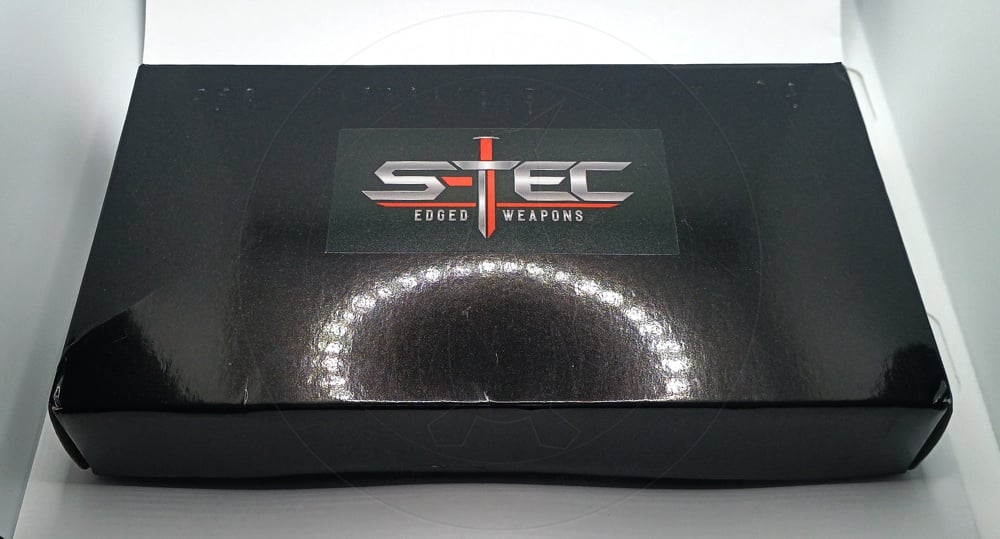
Despite having a perfectly cromulent pocket clip on it, the manufacturer couldn't help themselves but give you yet another lousy nylon belt pouch to go with this thing. But it's not just any lousy belt pouch. It is quite possibly the widest crappy nylon belt pouch...
In the world.

How wide is it? Well, here it is with three rolls of US quarters comfortably parked in it.
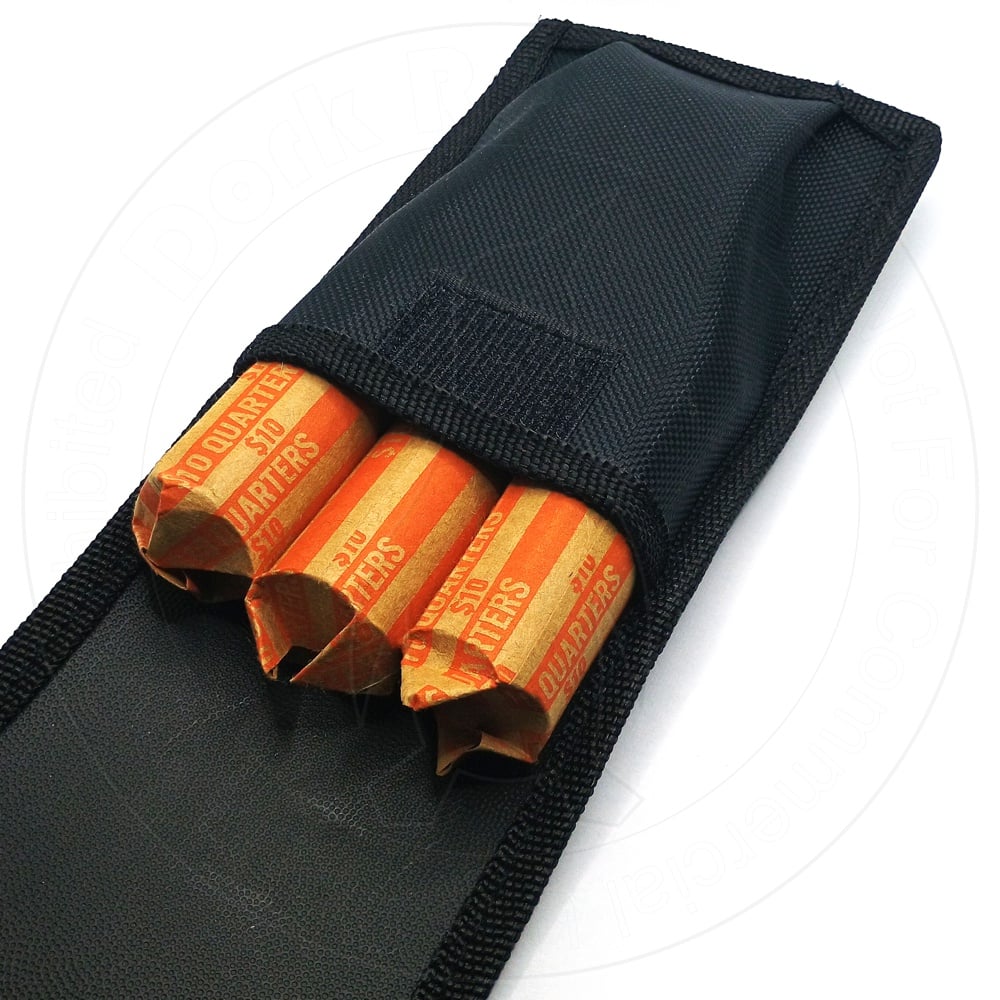
You get nothing else in the box but a little satchel of silica gel. No other freebies, no replacement hardware, no dinky crappy screwdriver, no leaflet covered in poorly translated chest-beating about this or the manufacturer's other products, not even a perfunctory business card begging you for five star reviews.
Oh well.
The Inevitable Conclusion
To some degree nothing I've written above matters. The TS004M-SL is the superlative. It has one aspect, and it's got big hairy bucketloads of it.
And at the end of the day, it's actually put together pretty damn well considering the price. It absolutely could have been worse. And it isn't.
The TS004M-SL is just fucking cool, and on some days that's a pretty good substitute for performance and practicality. It is absolutely The Business. Yes, it will fuck up anything you manage to get underneath of it. It took a shockingly small amount of effort to sink it into the wood in the headline photo I used up at the top of this column. Just feeling that kind of power in your hand speaks to some part of everyone.
And, I mean, come on.
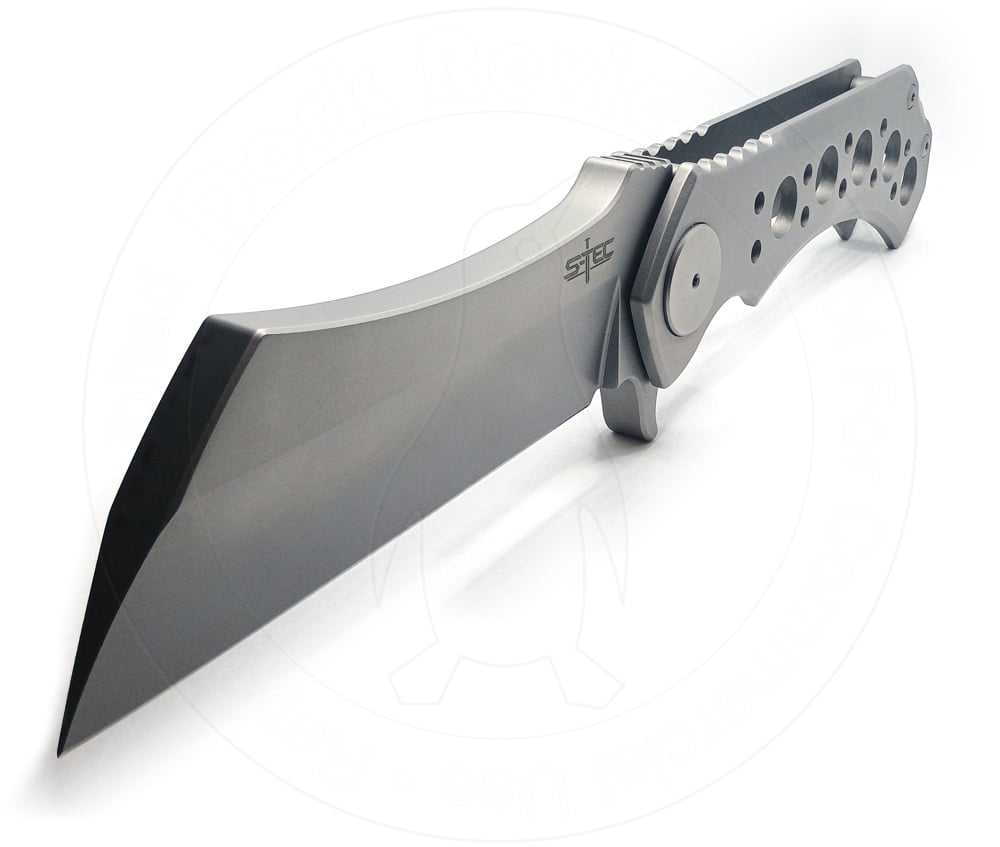
Don't tell me you didn't see this and then immediately stick the model number into your search bar. I know you did.



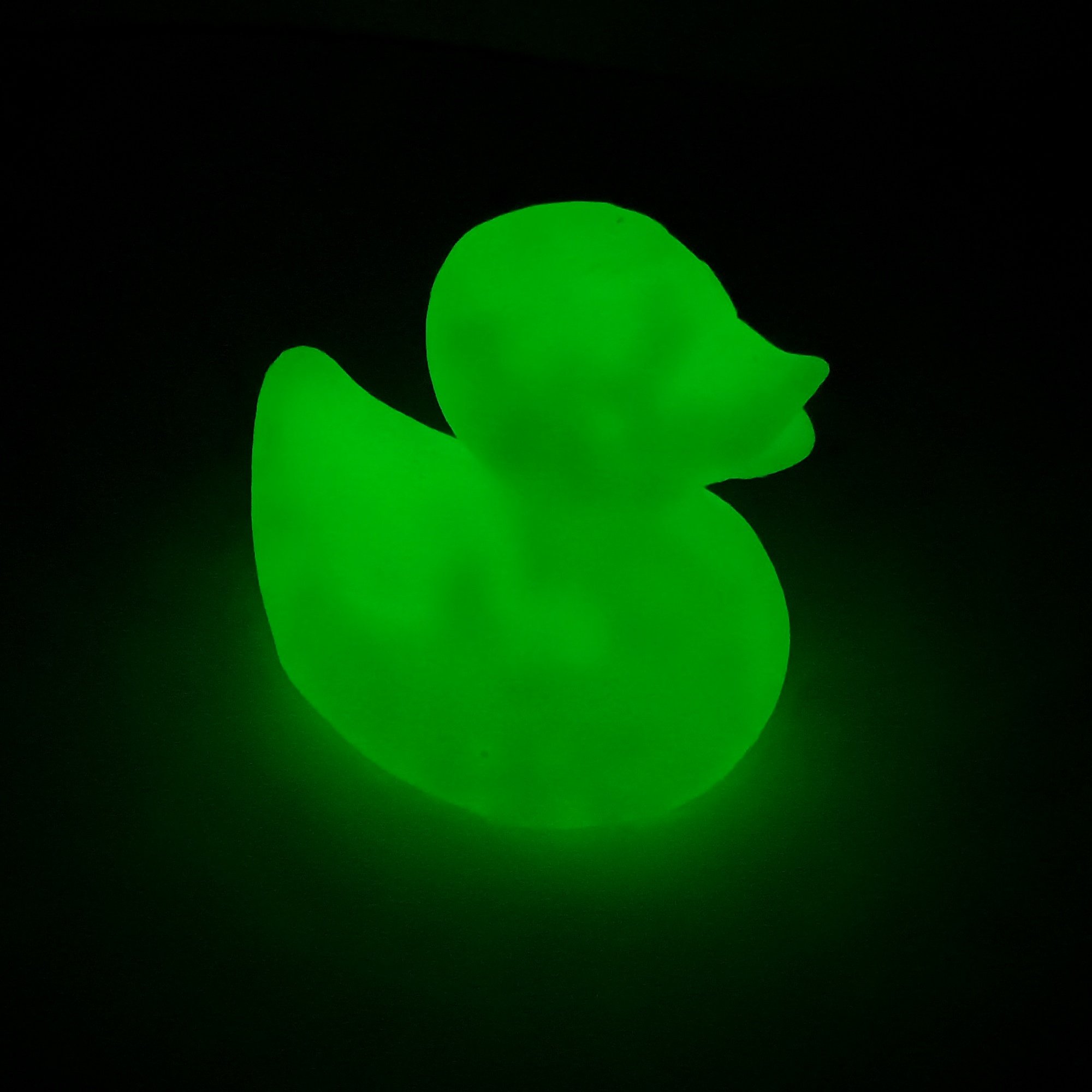


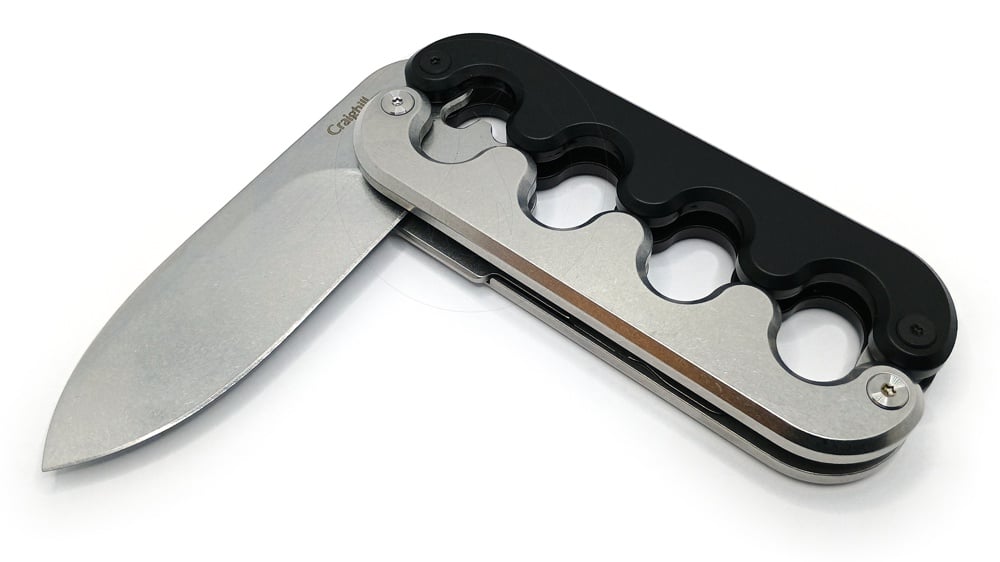
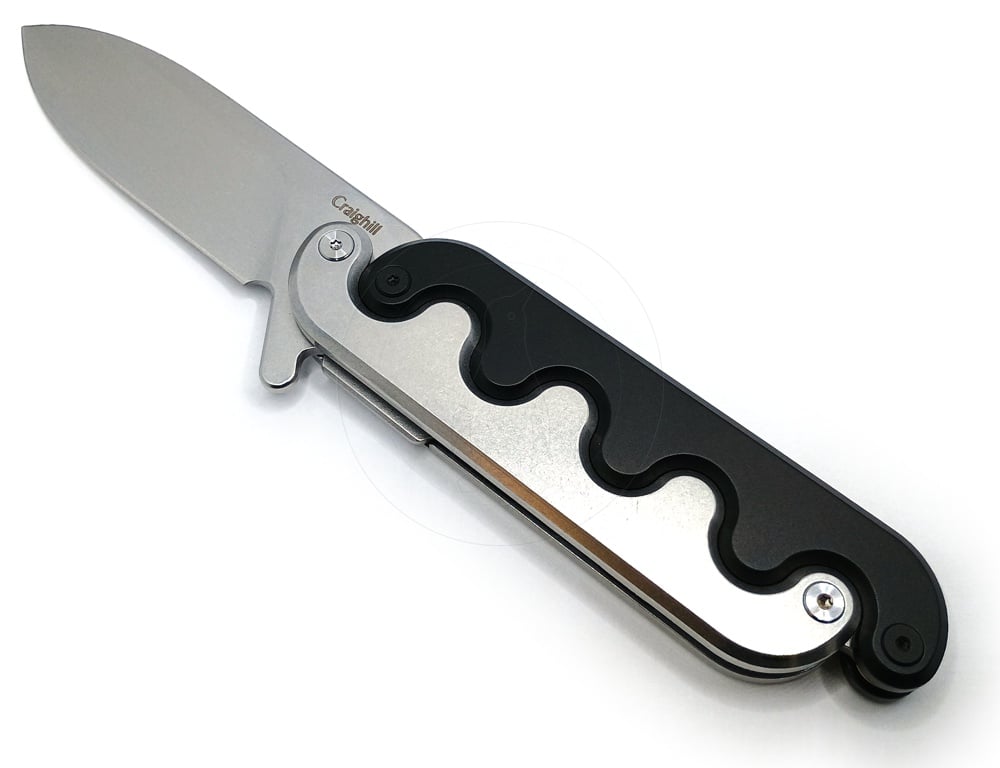

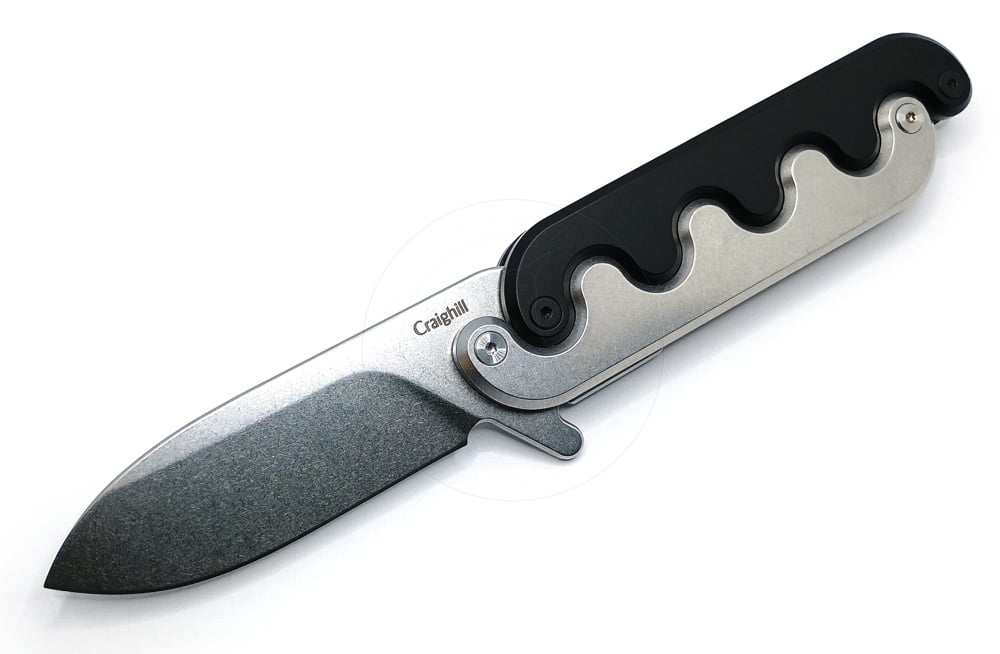

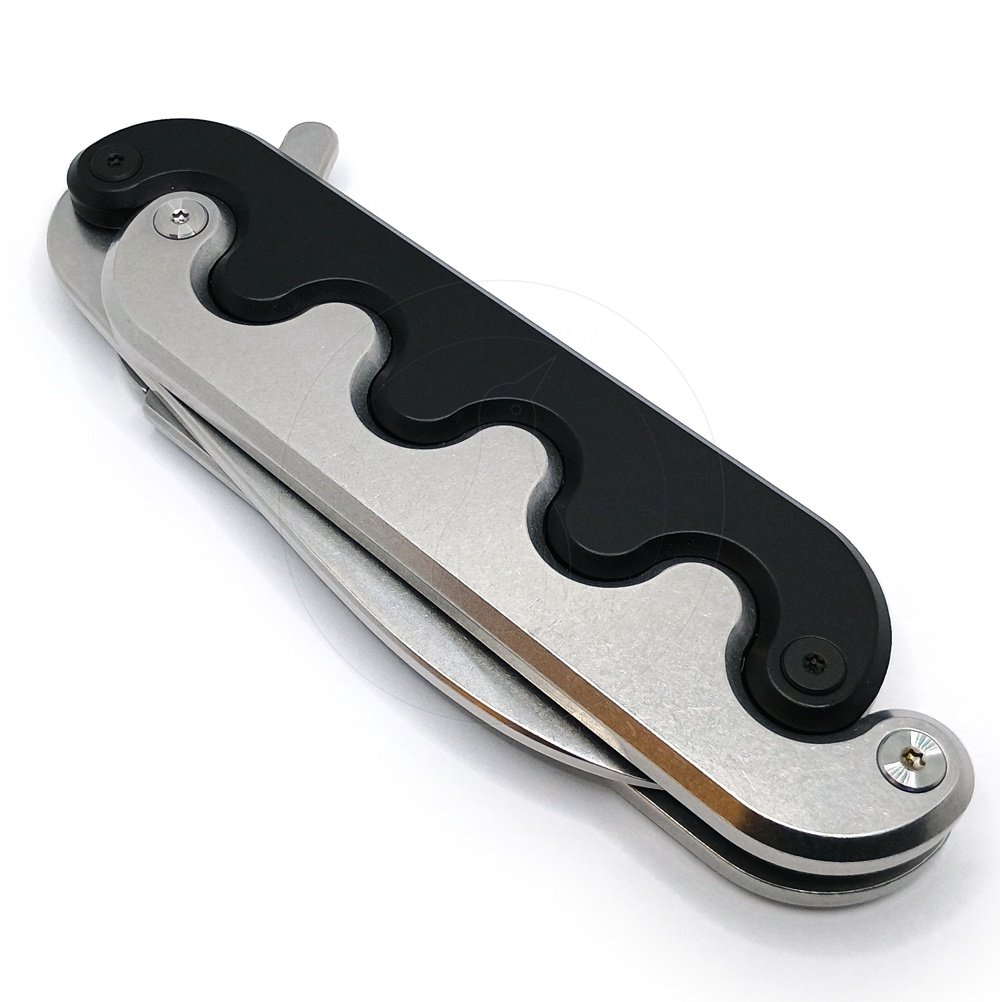
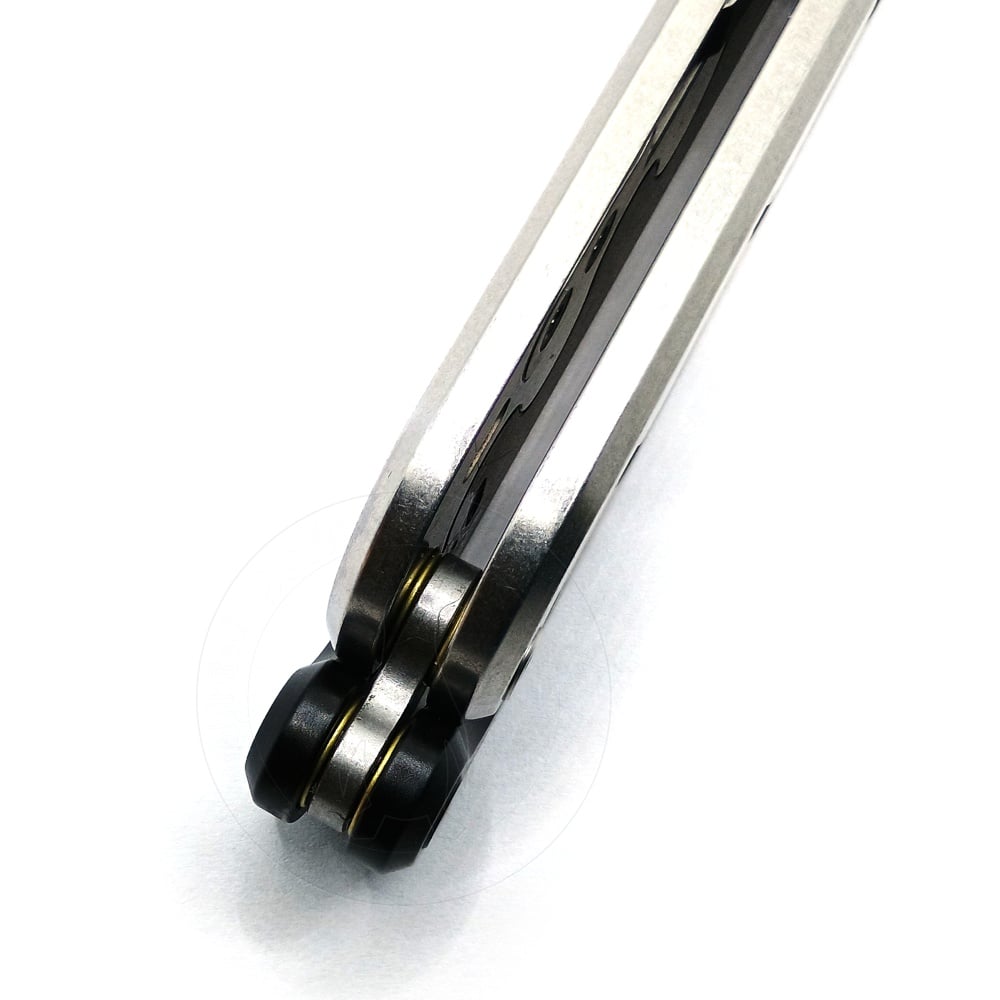
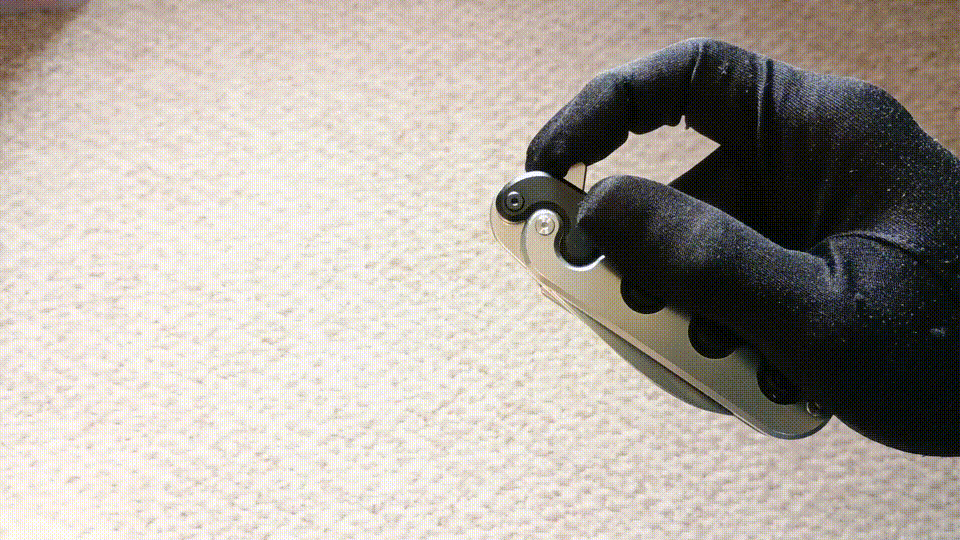
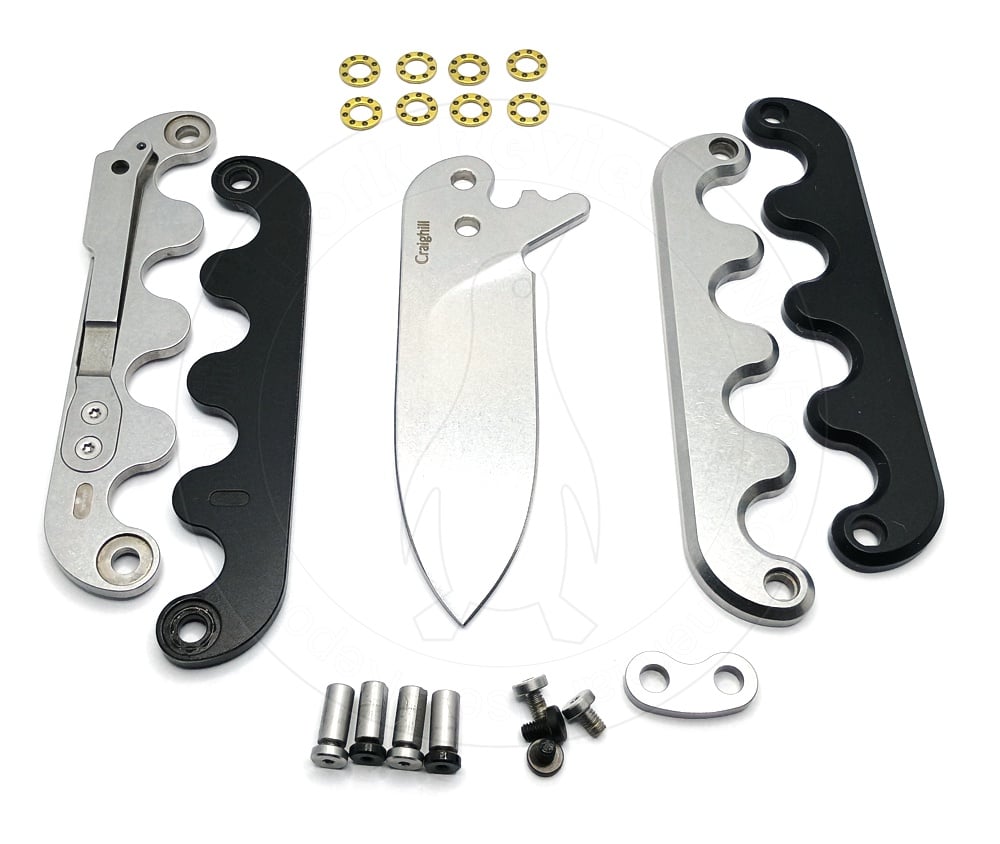


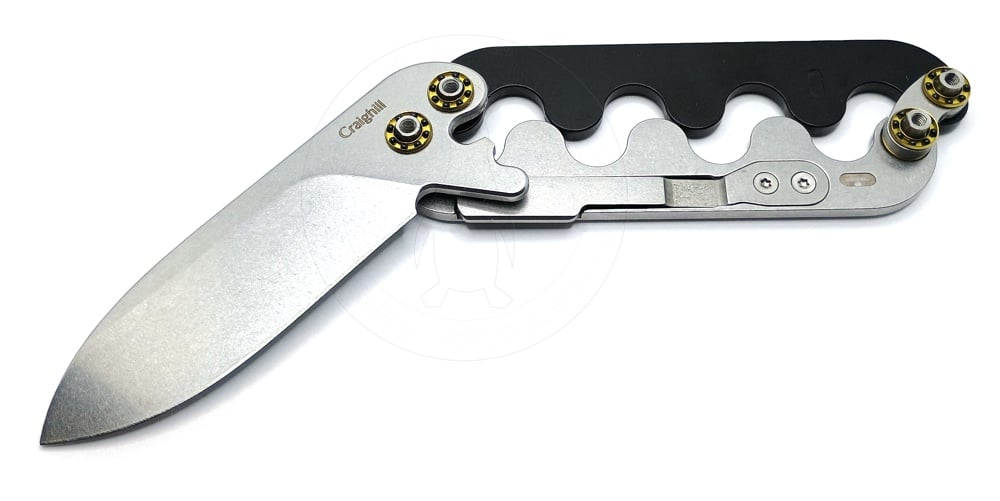

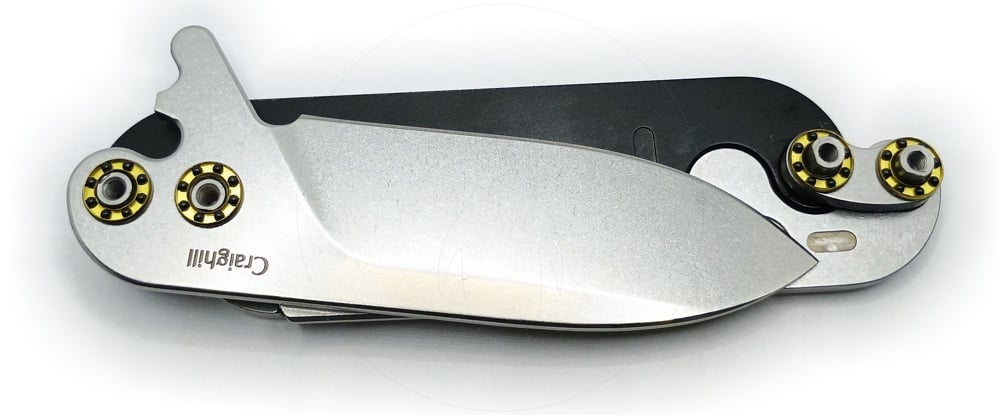
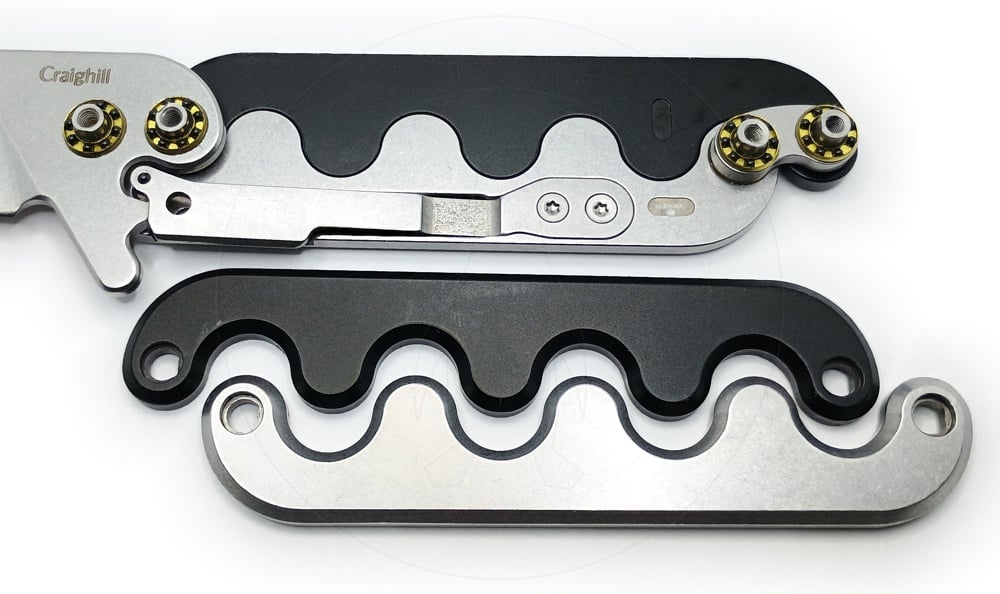
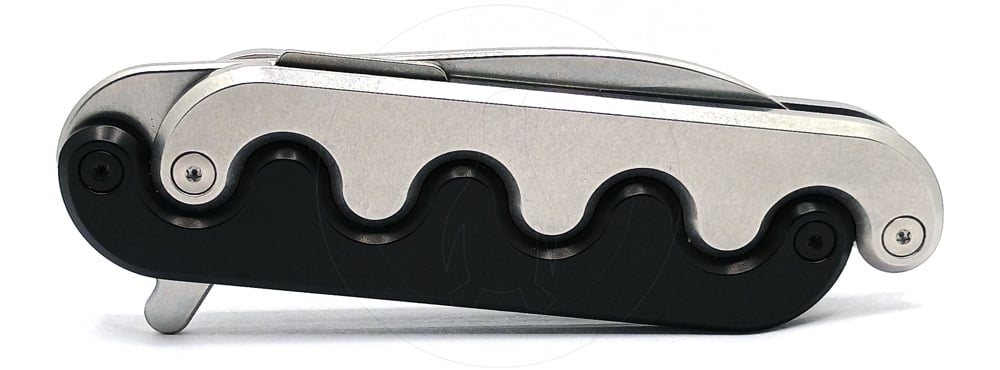

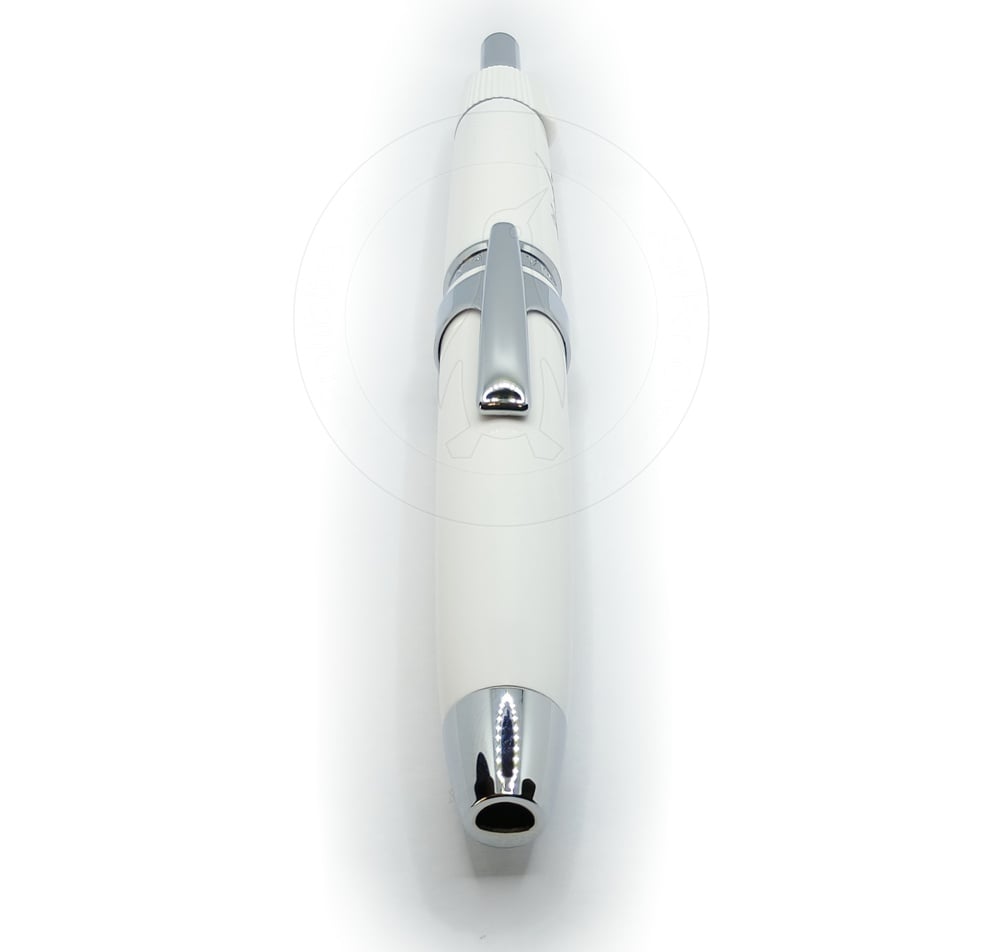
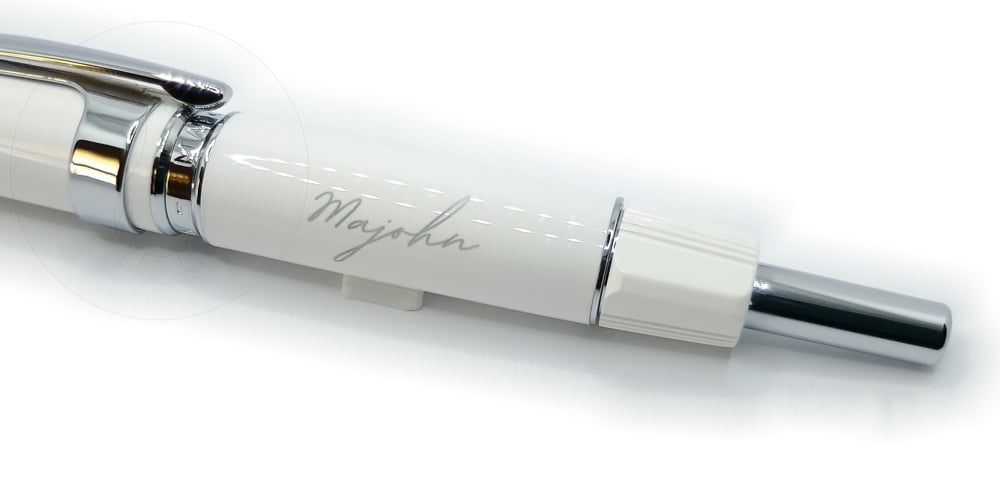

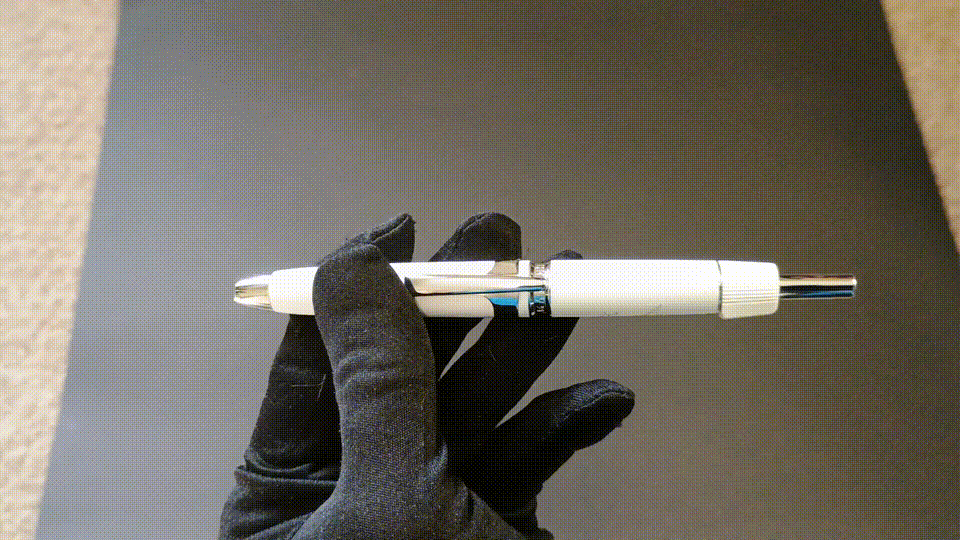

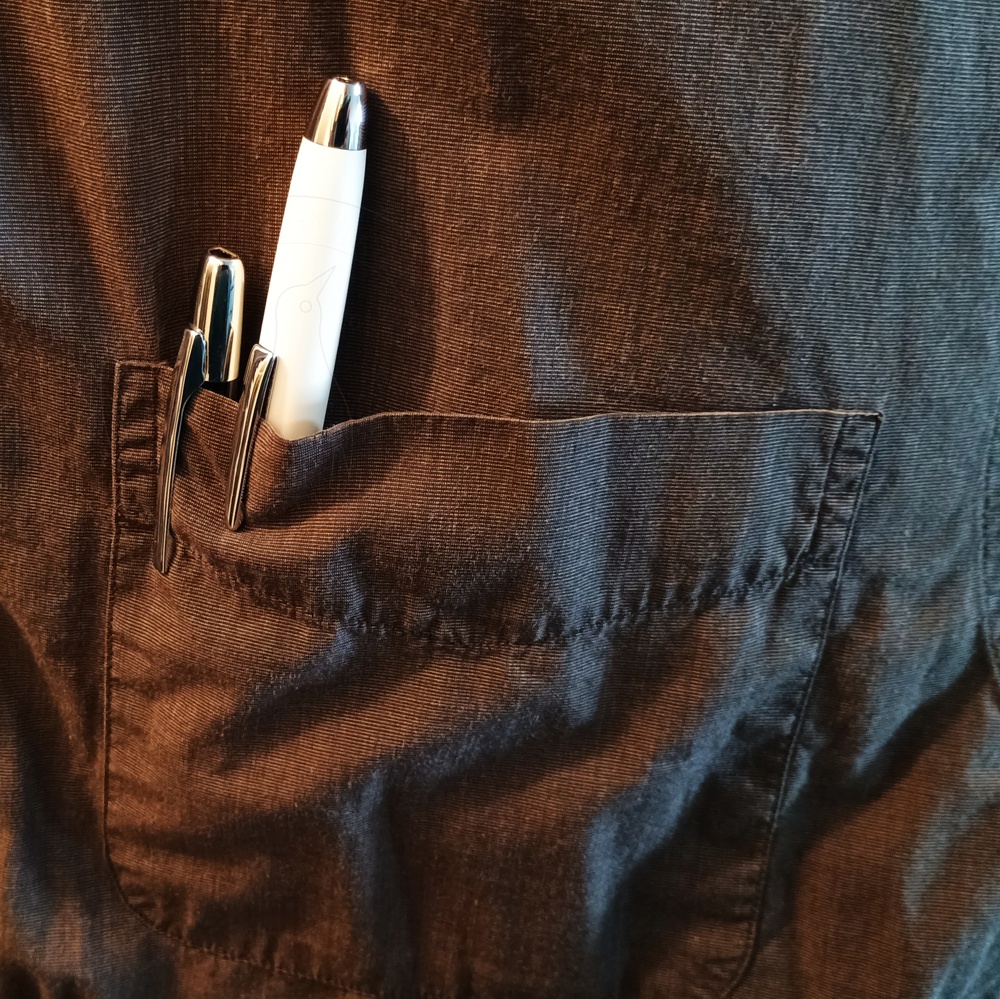
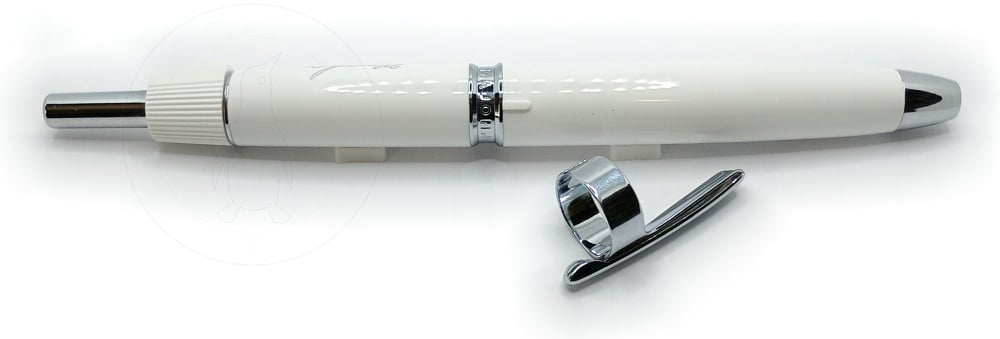

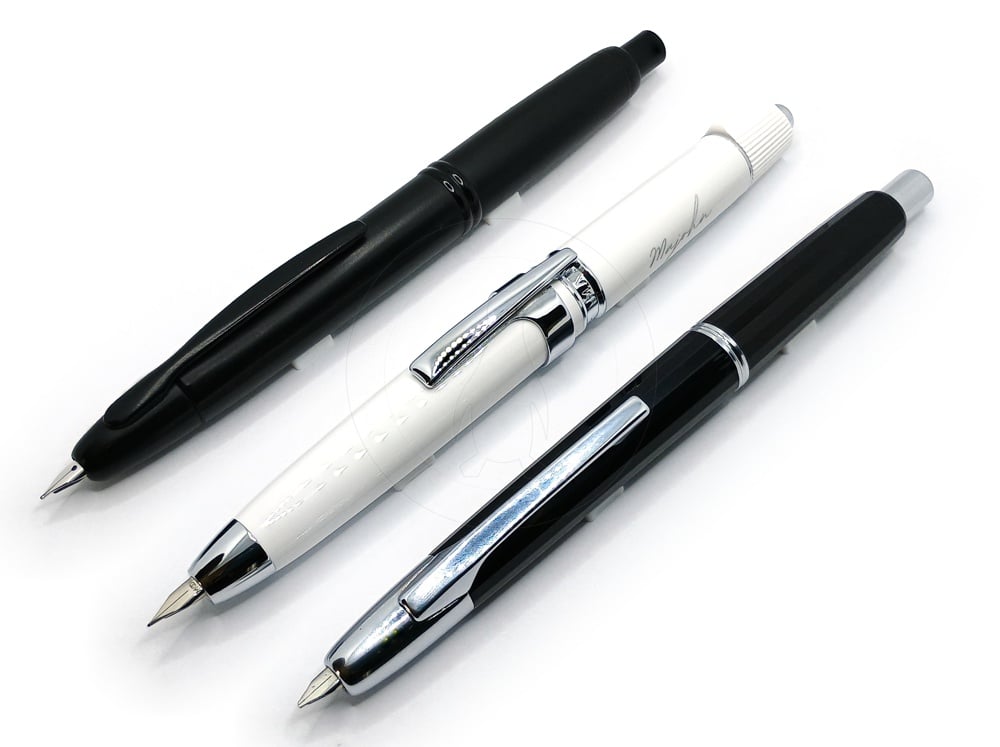
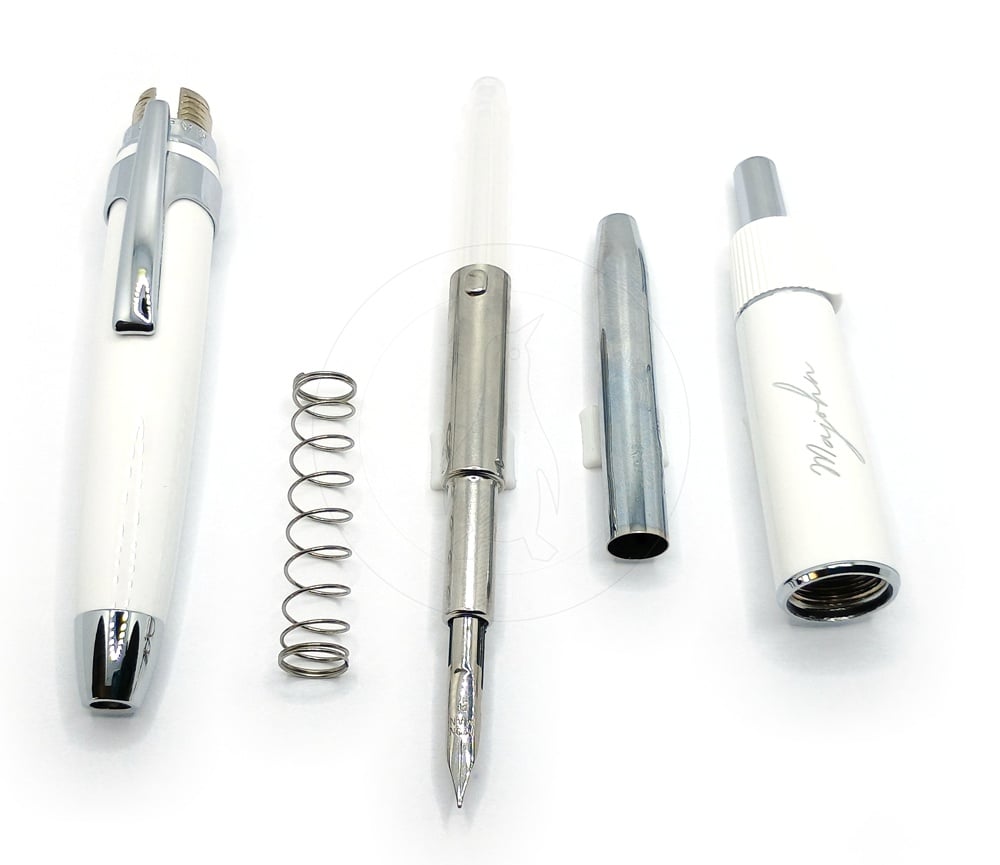
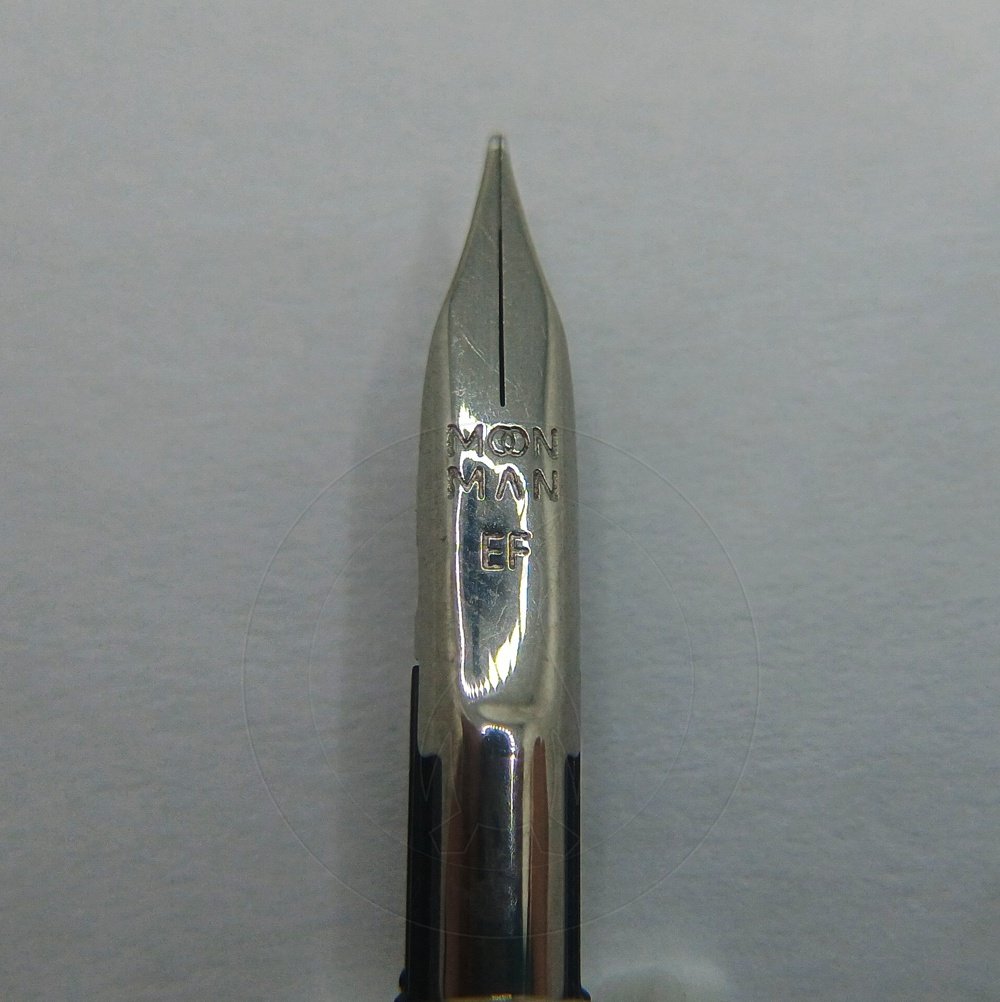















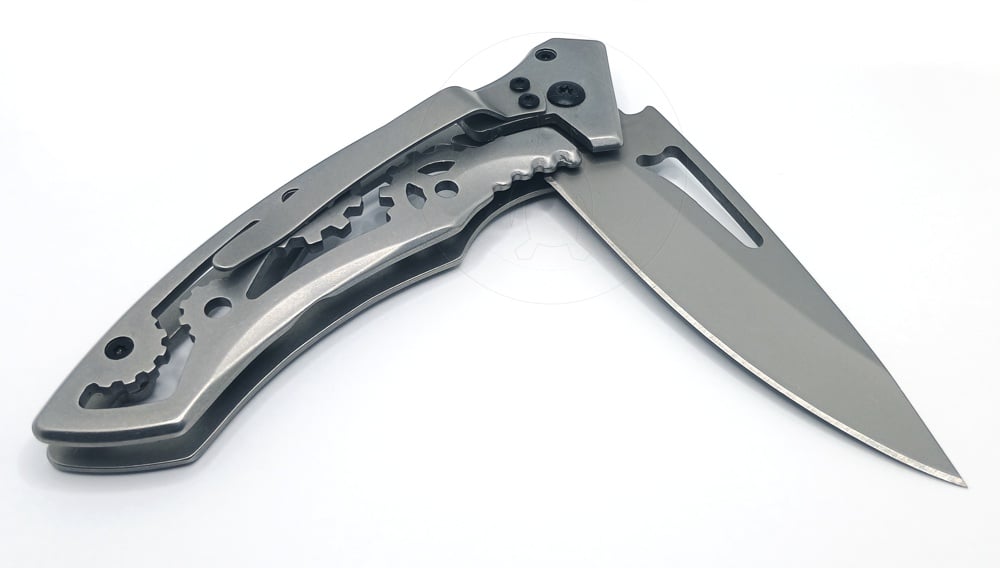
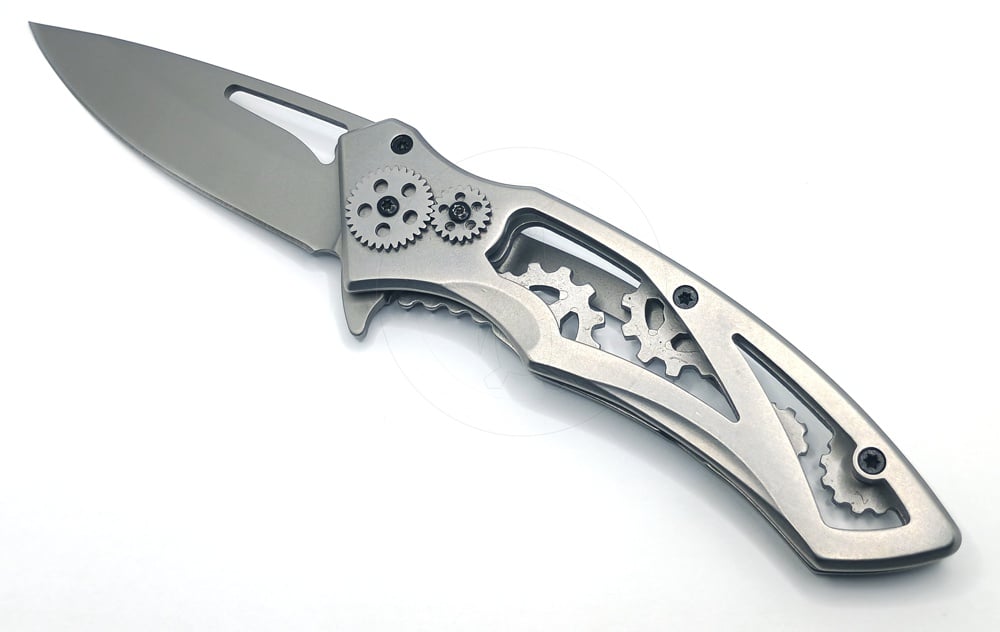



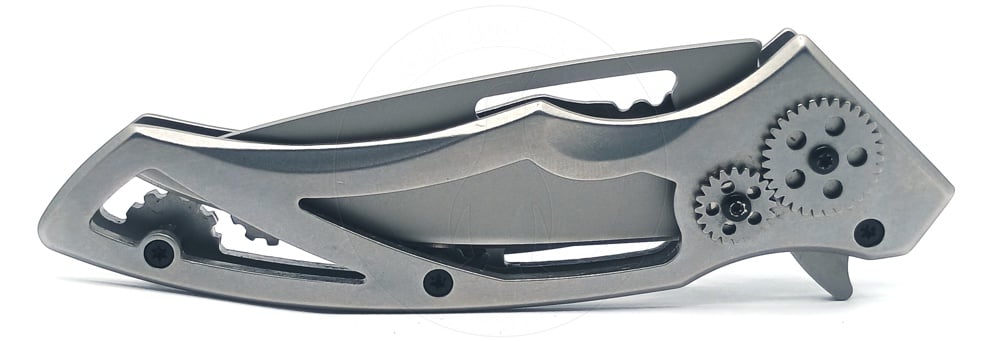
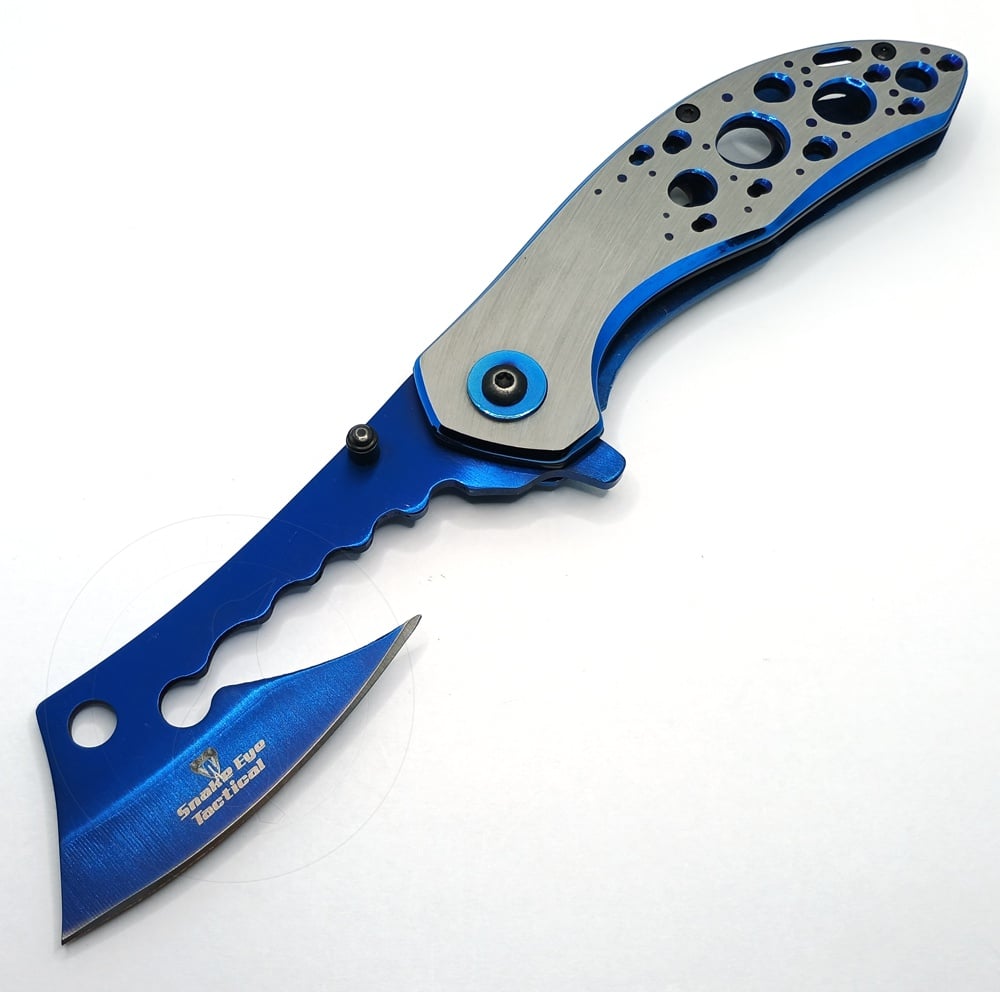
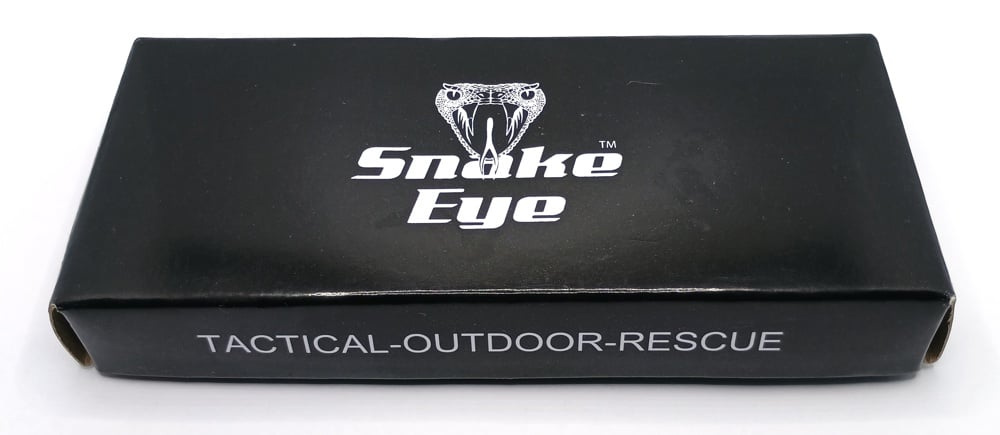
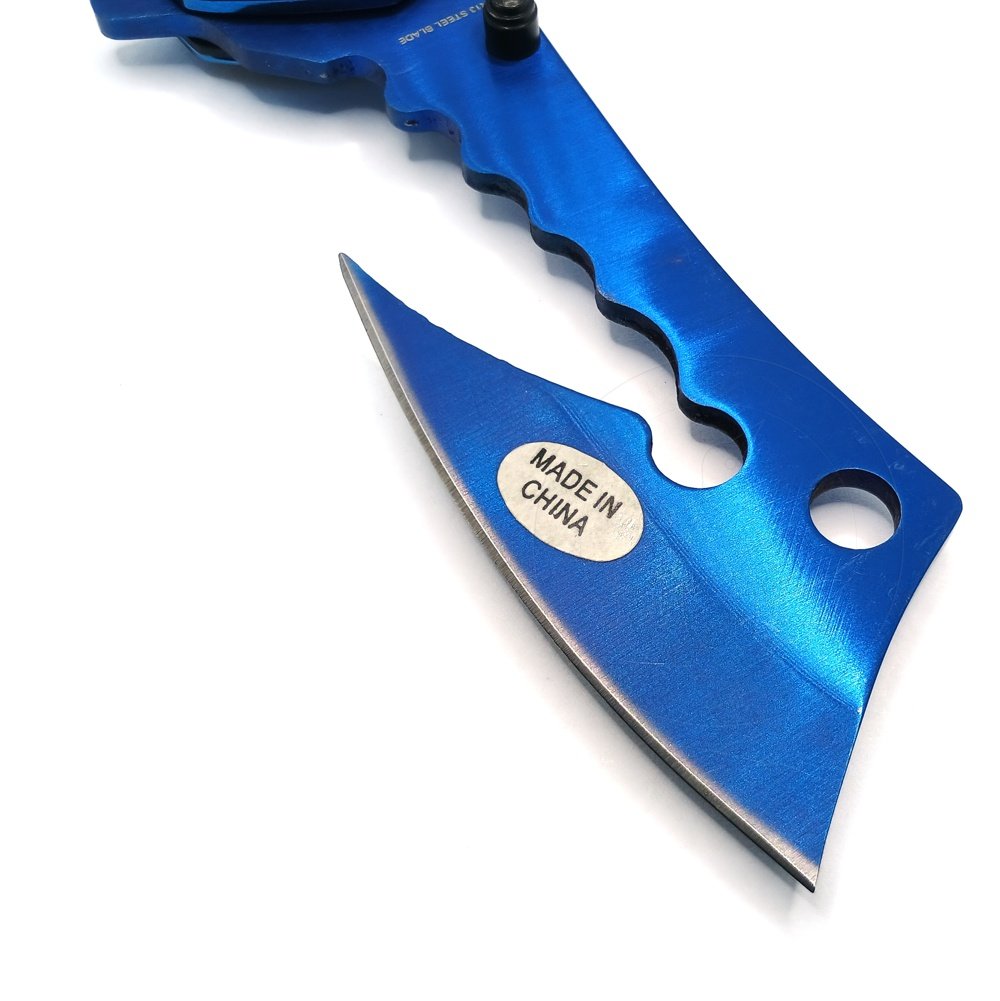
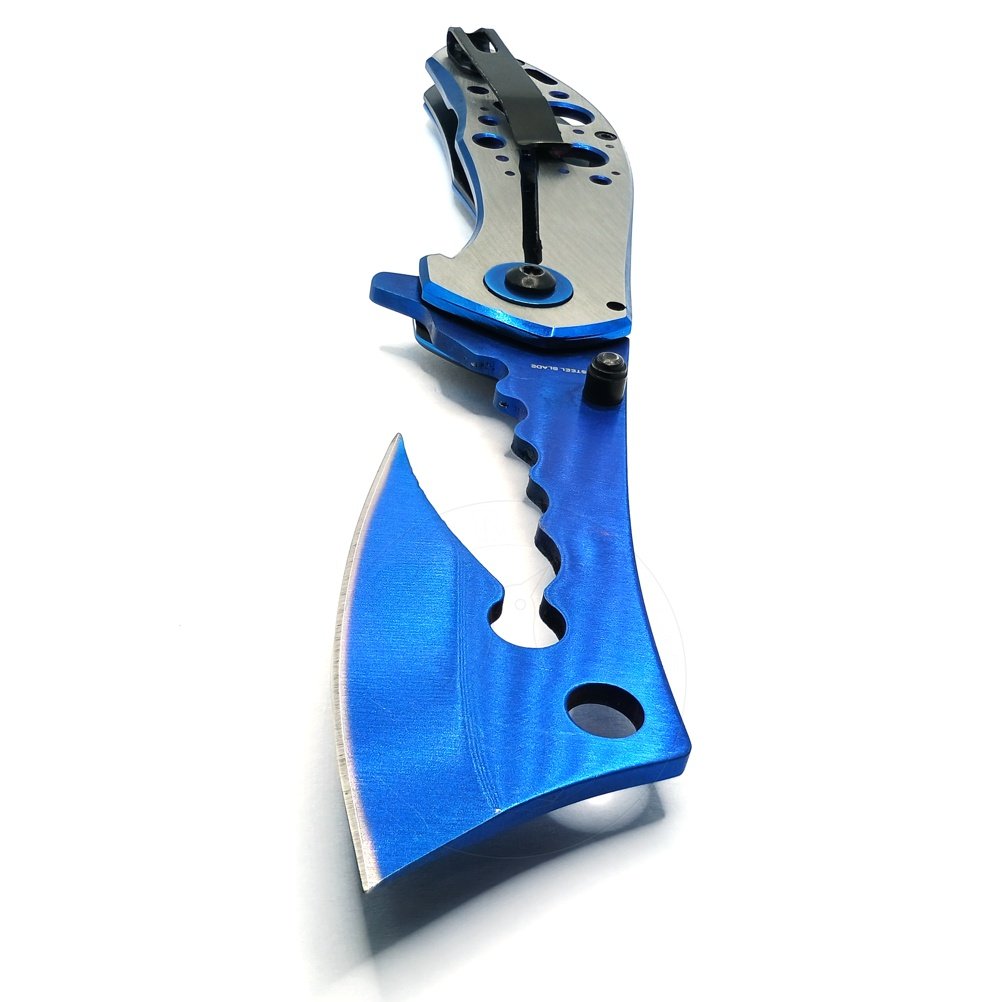

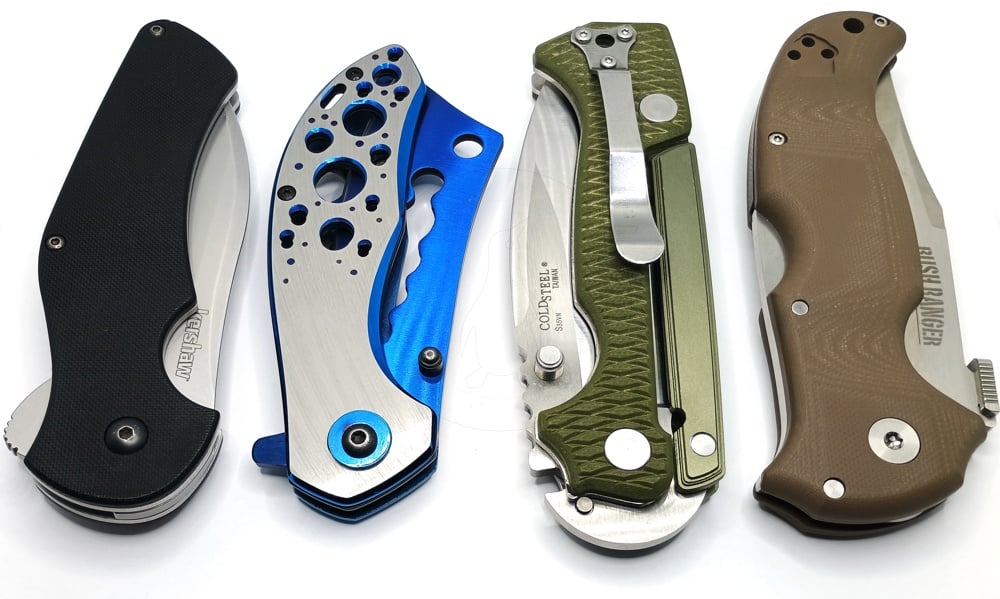
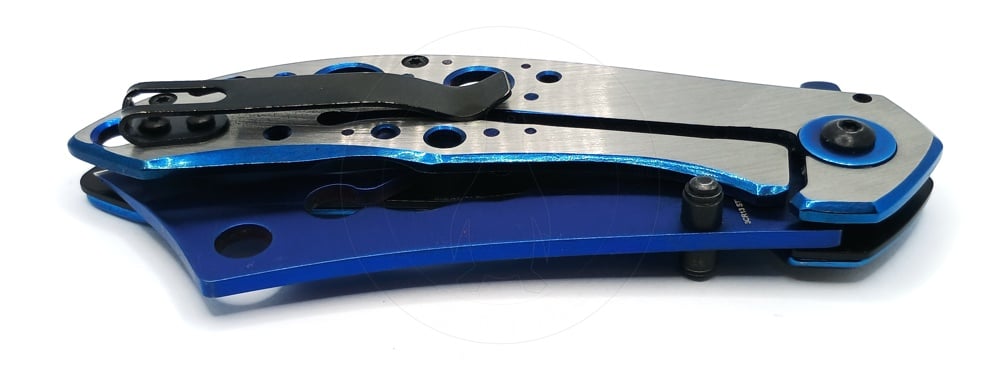

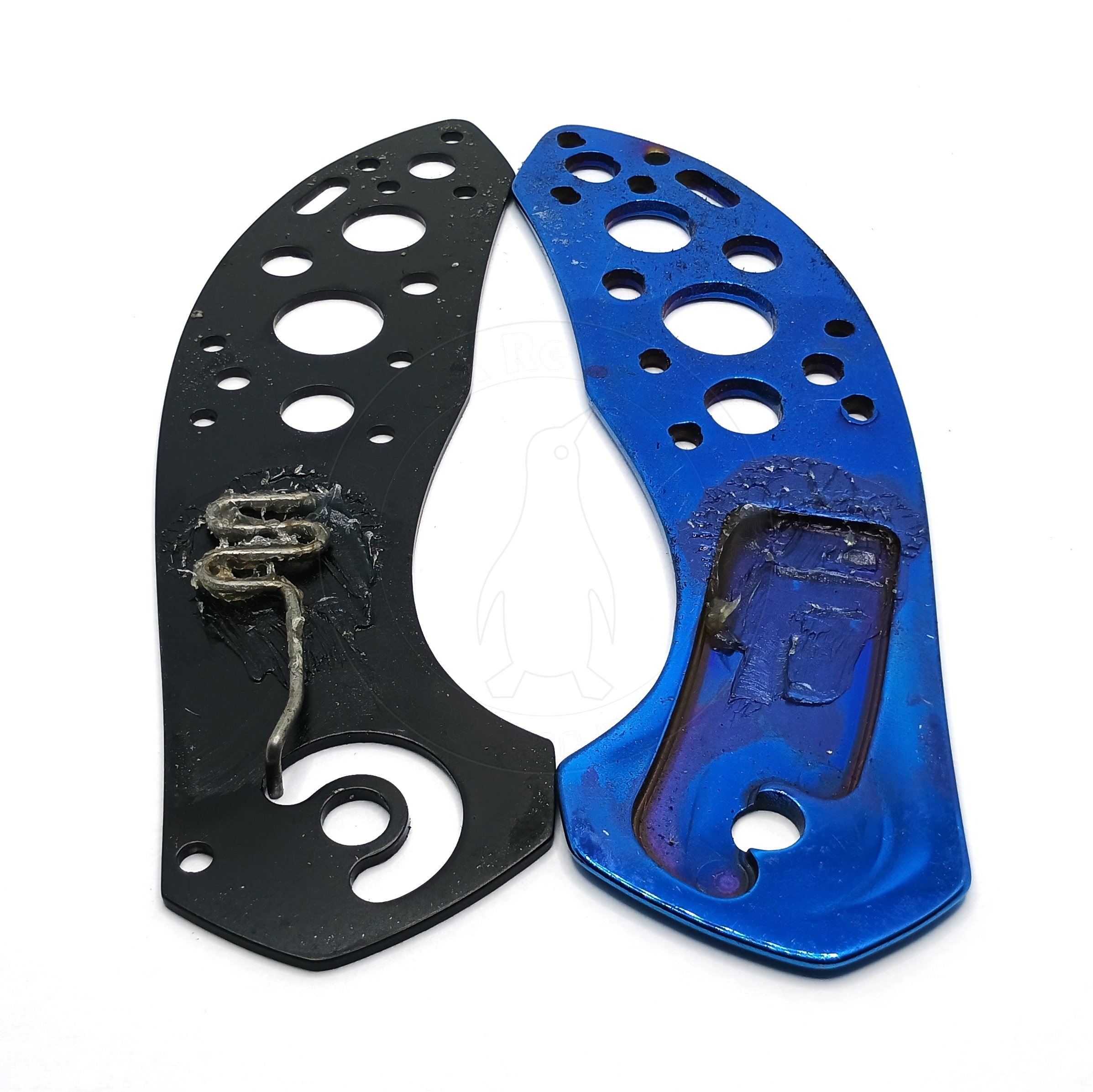
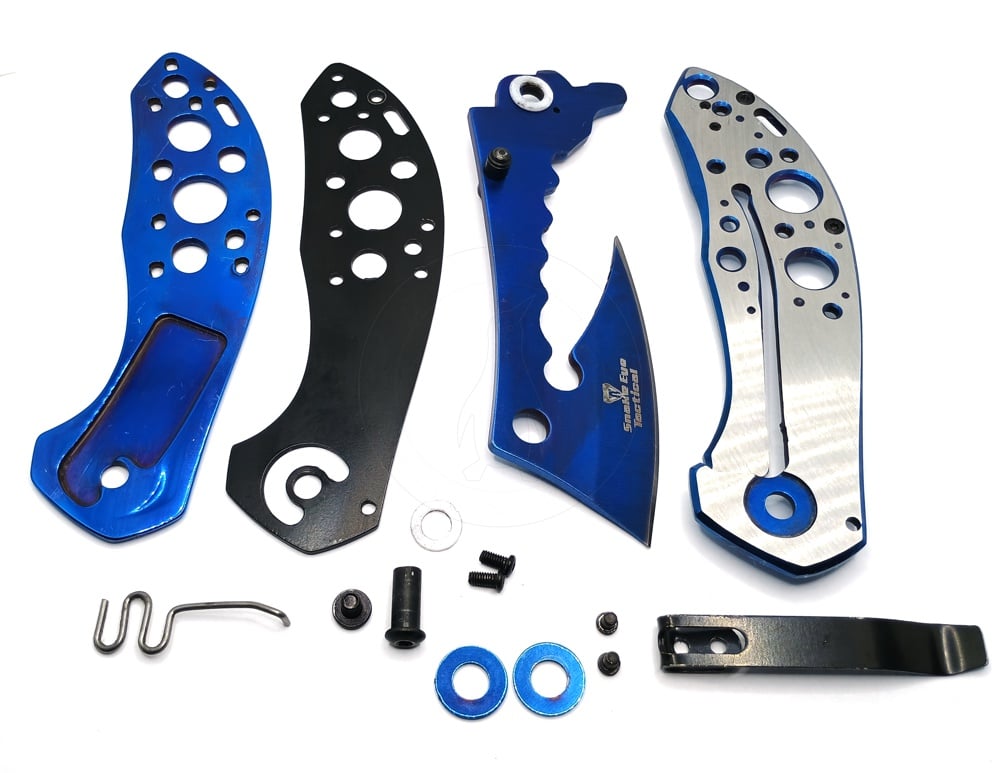

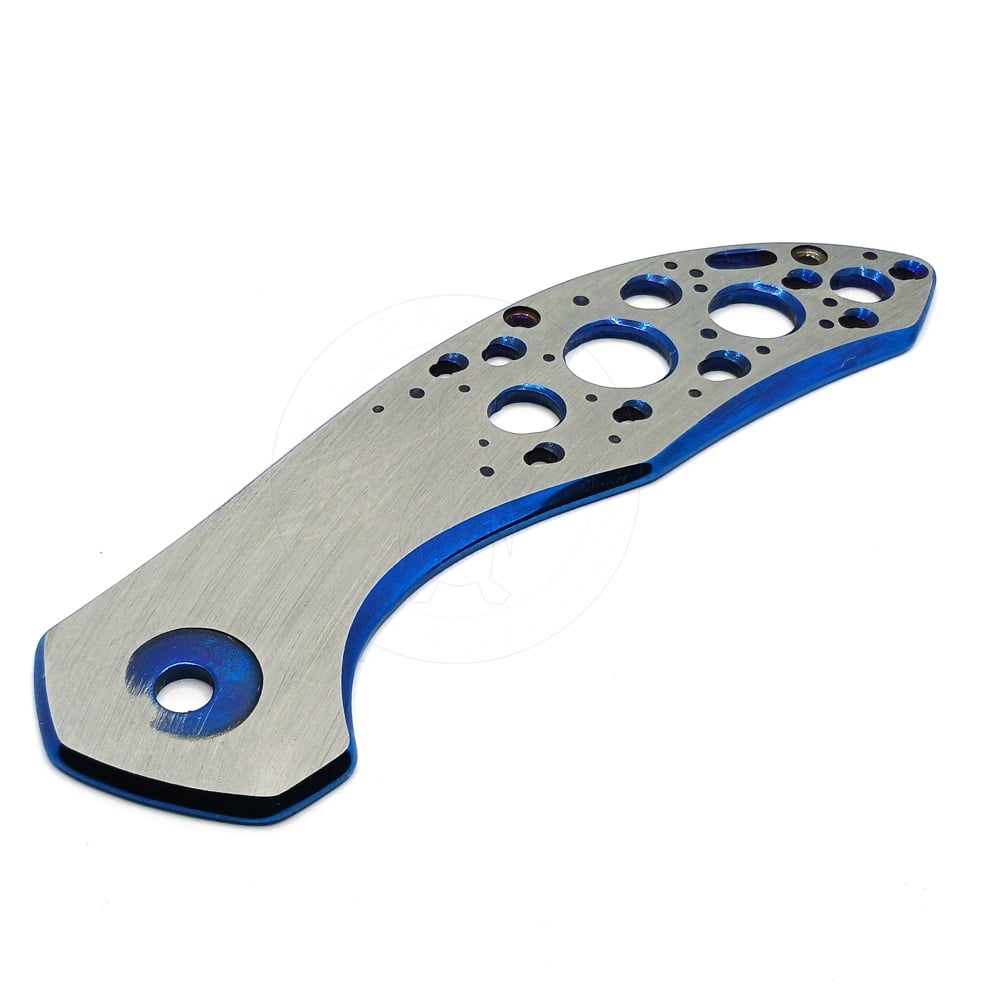
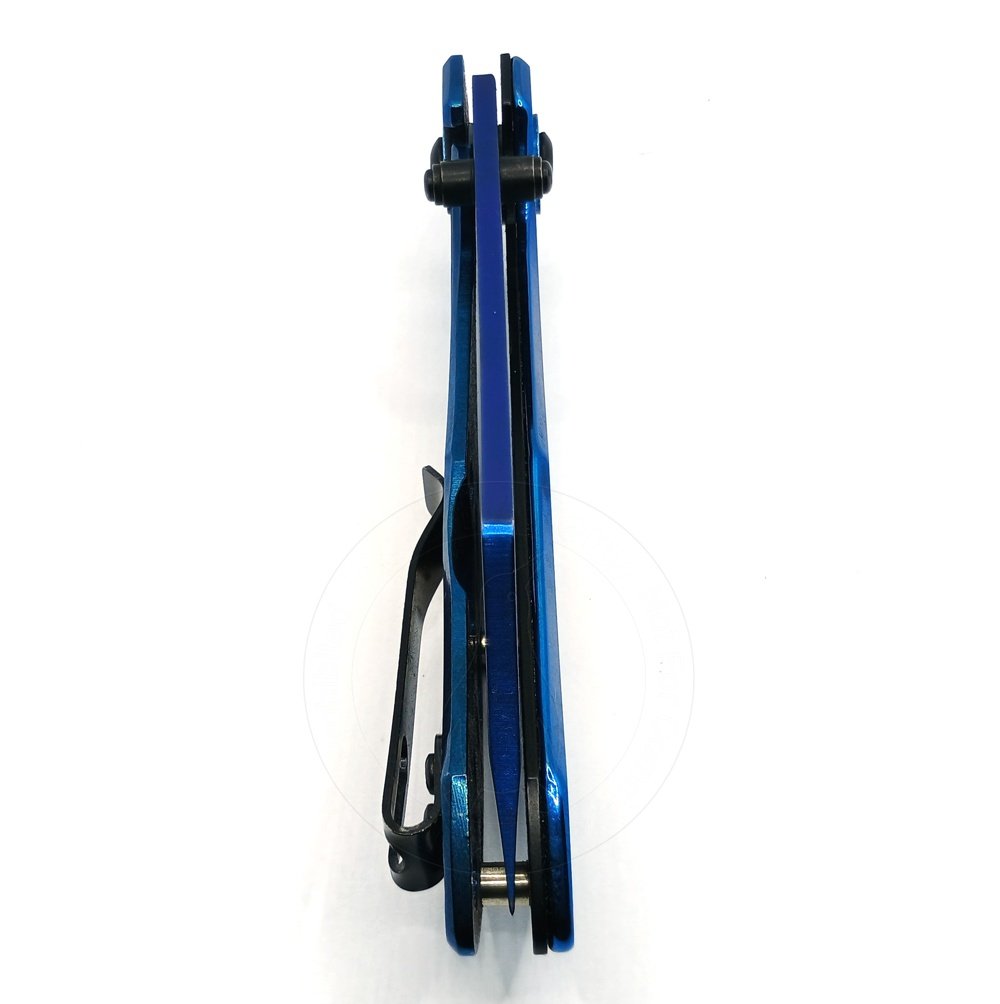
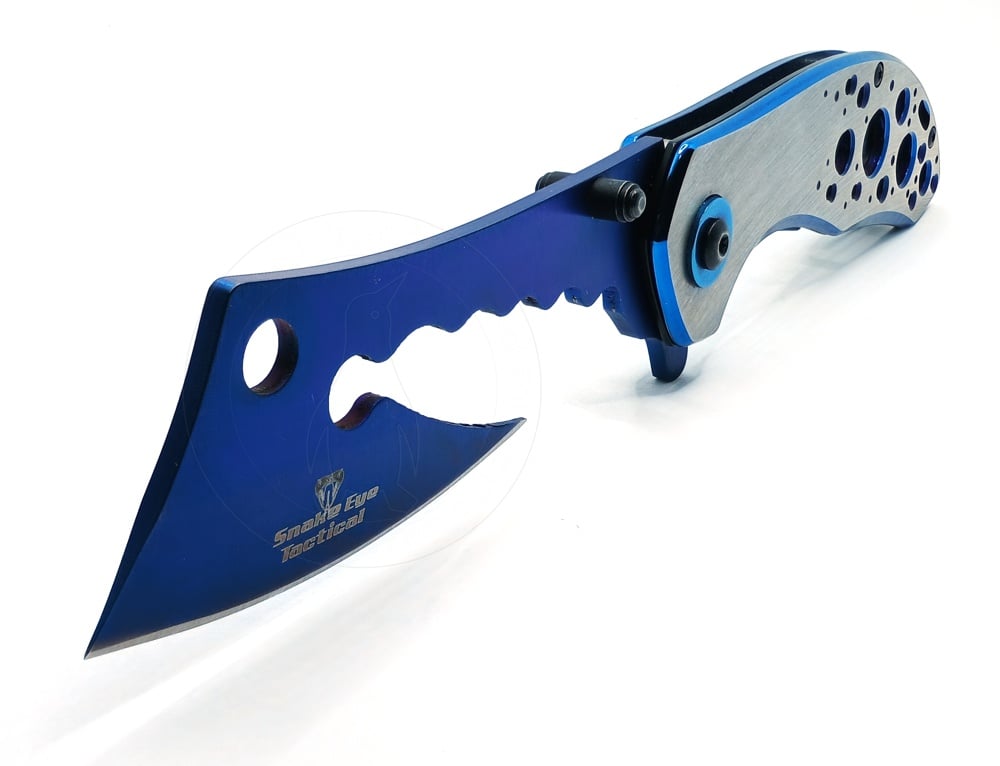
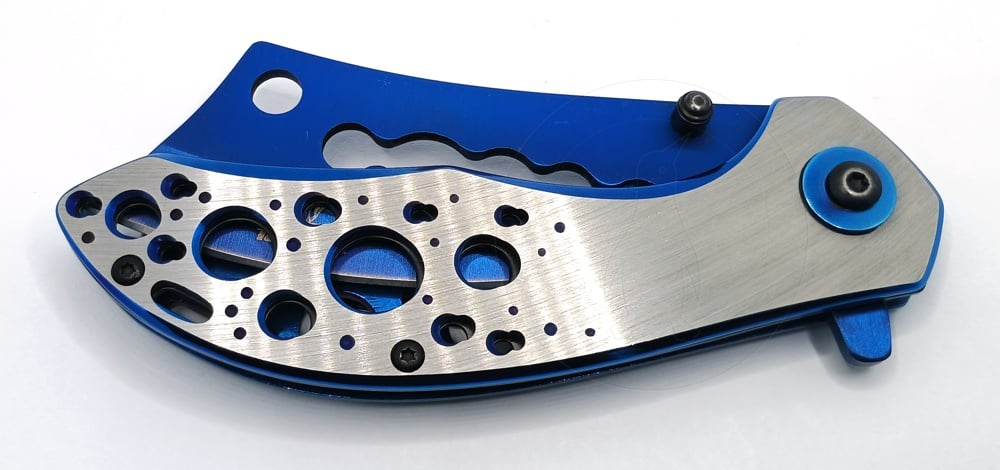


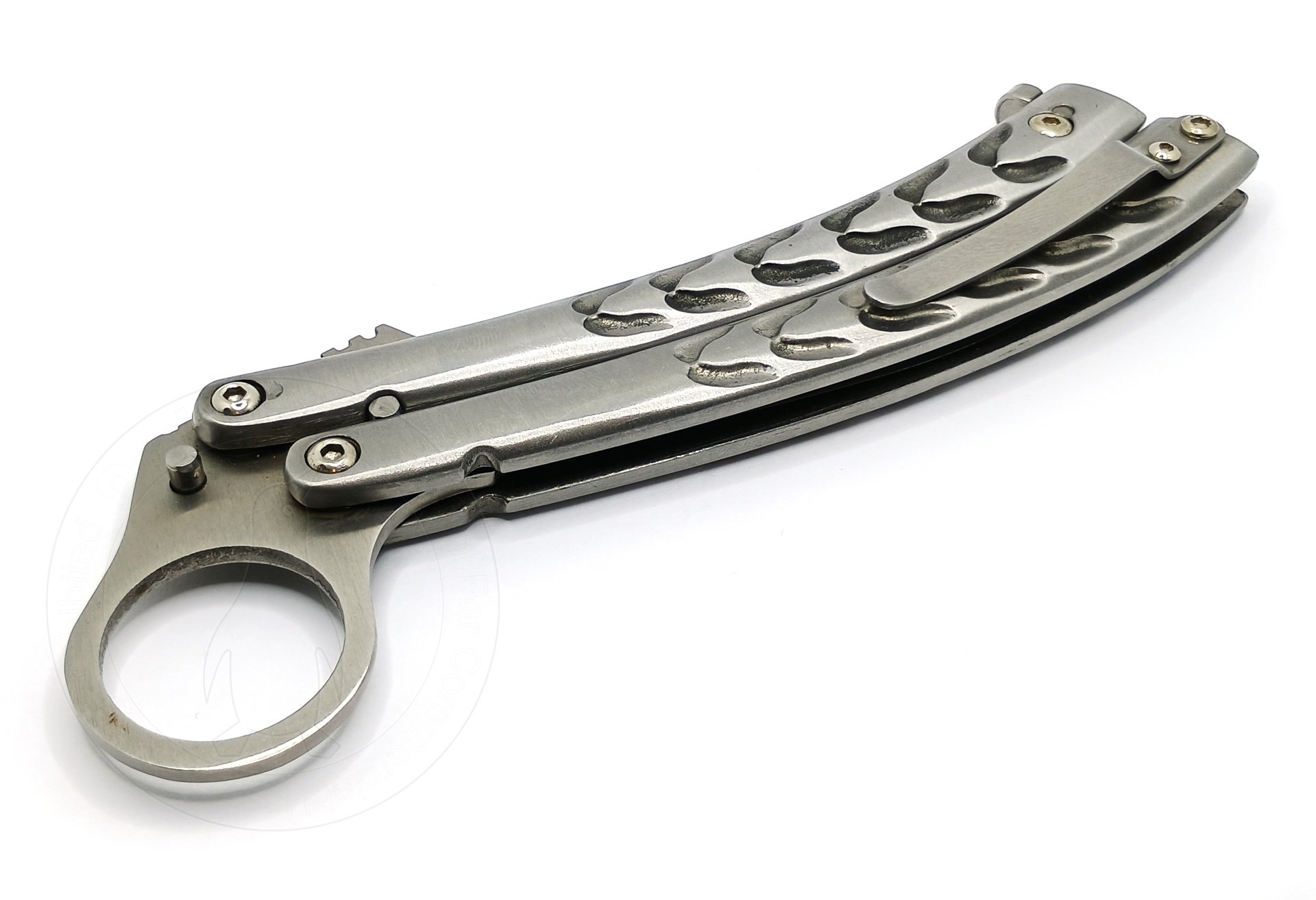

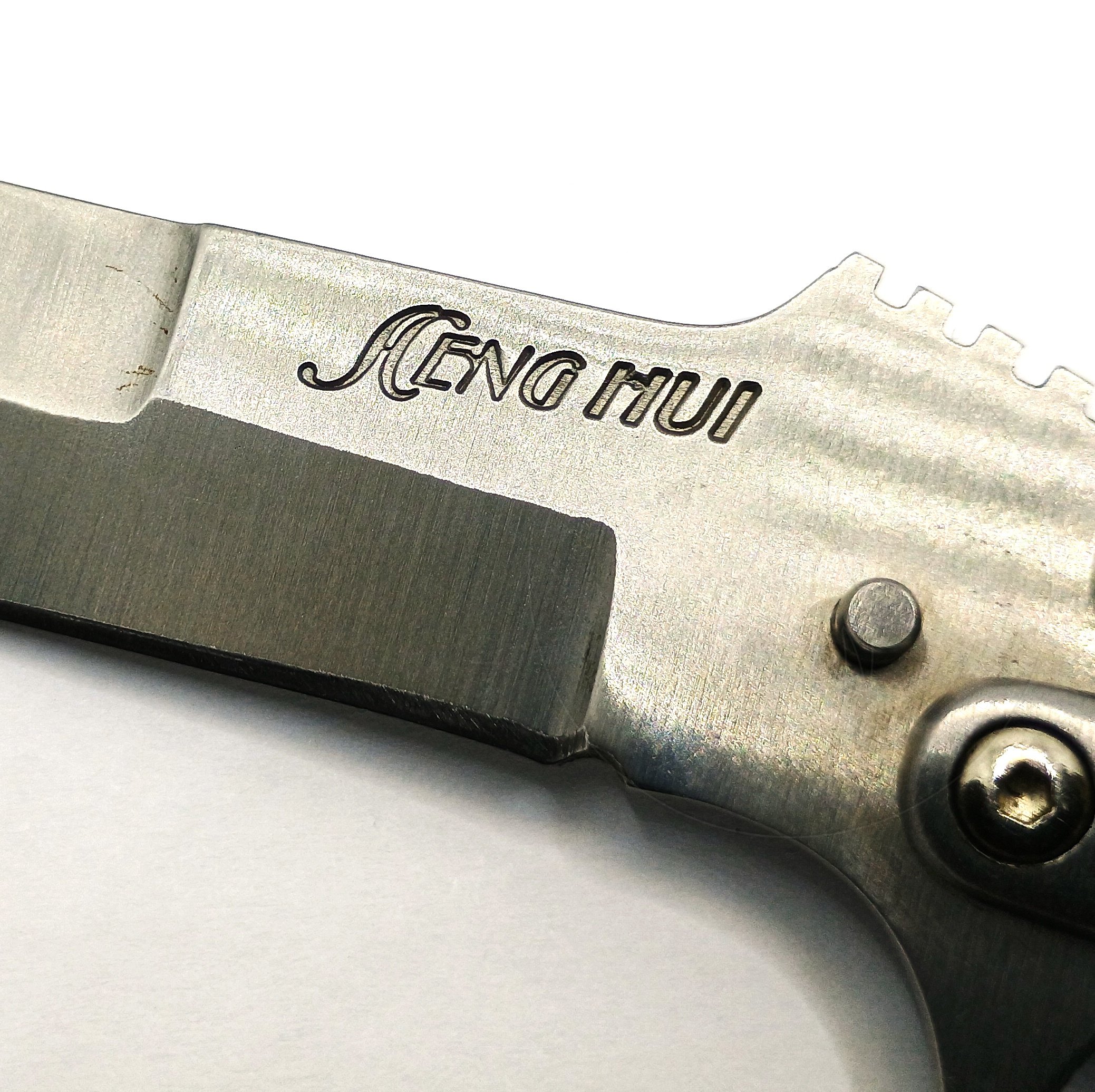
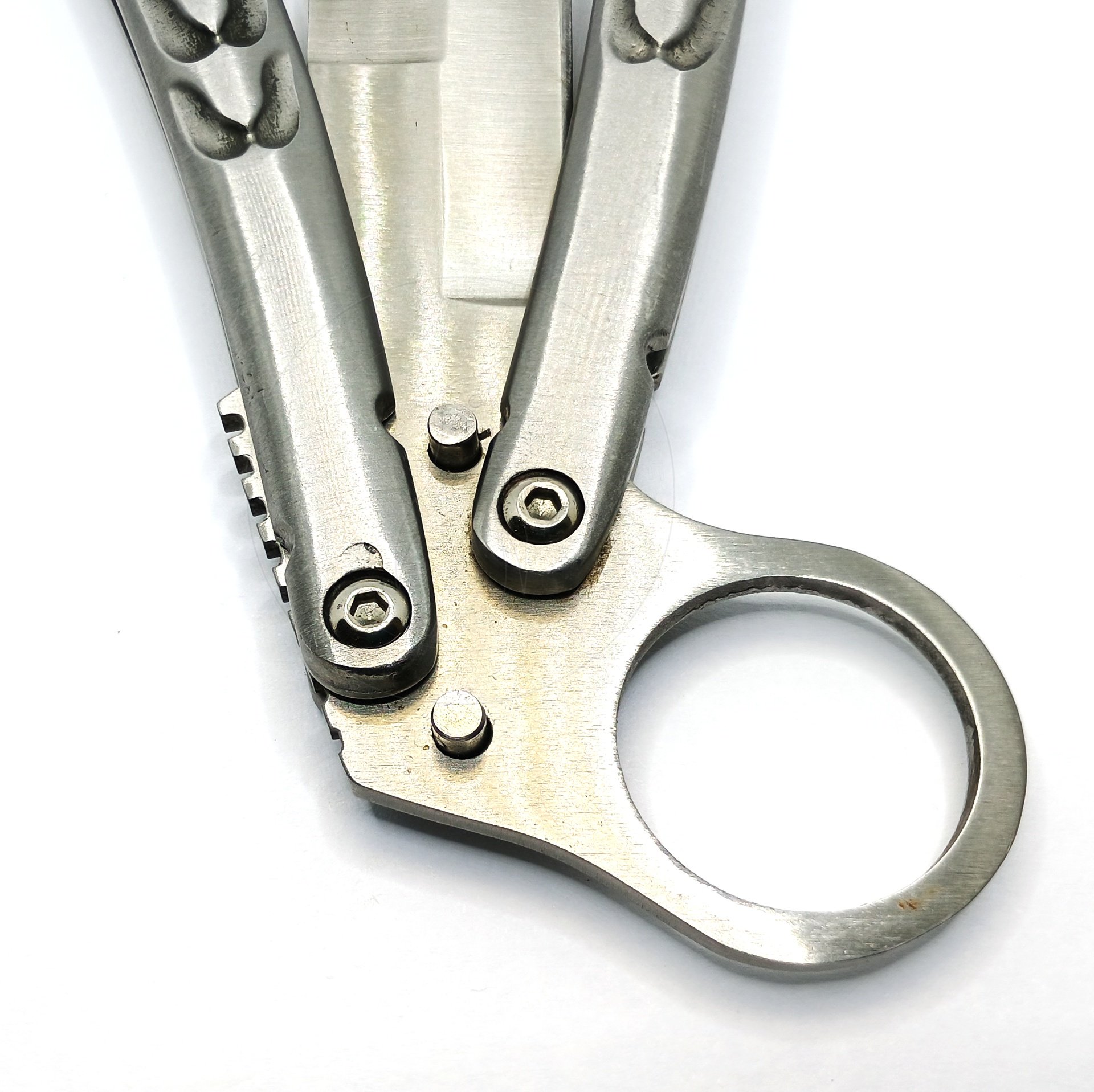


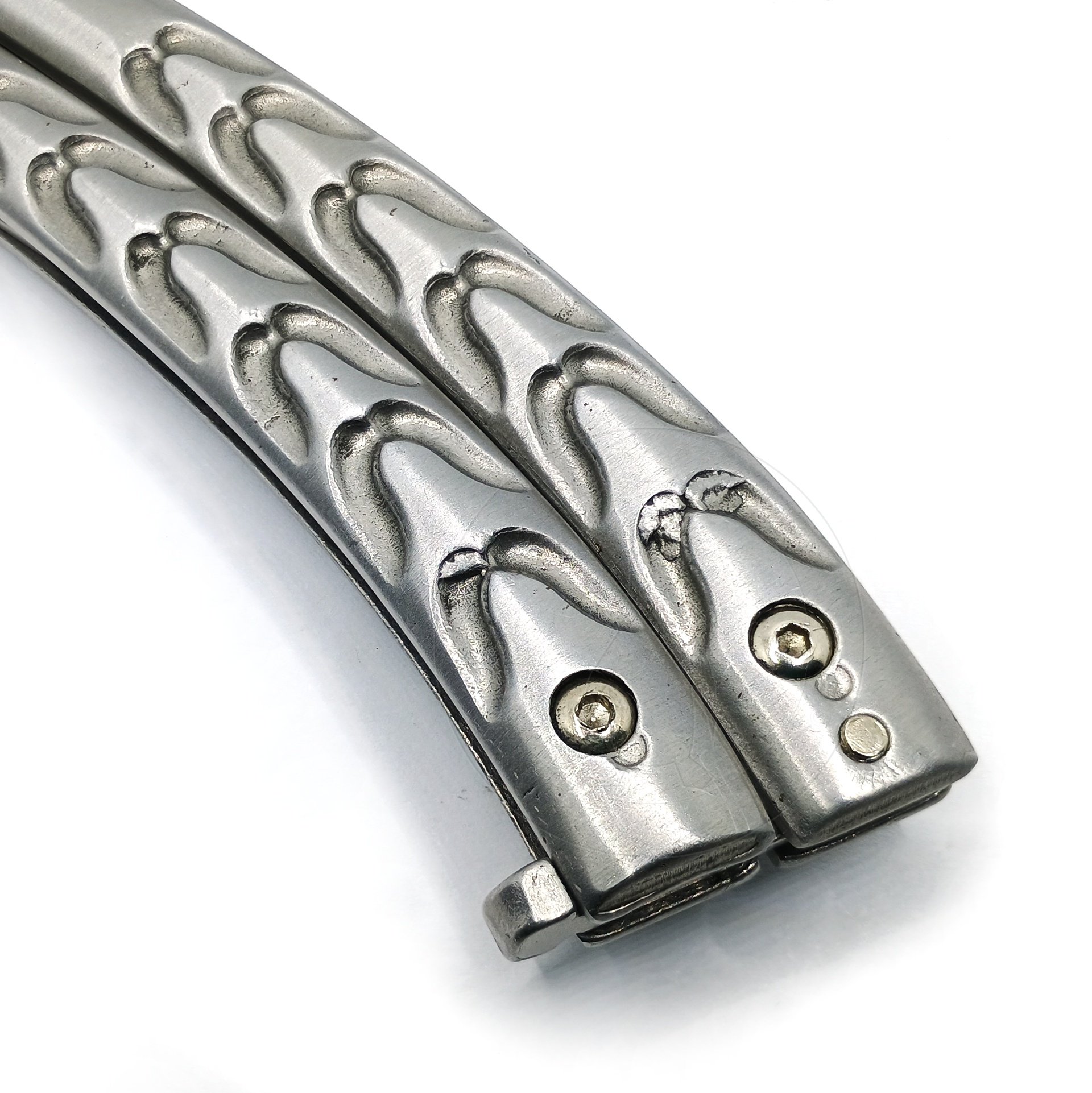
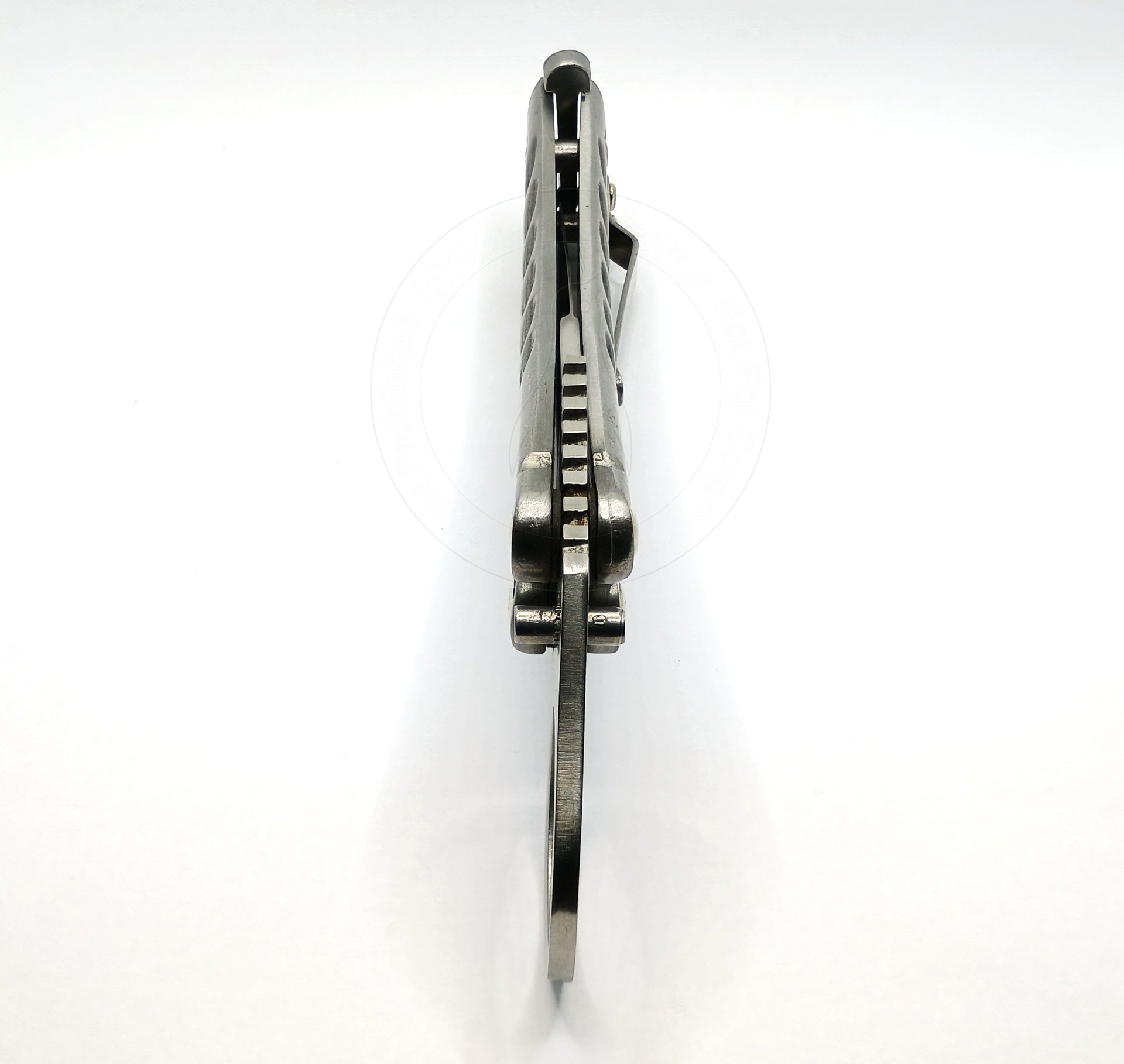
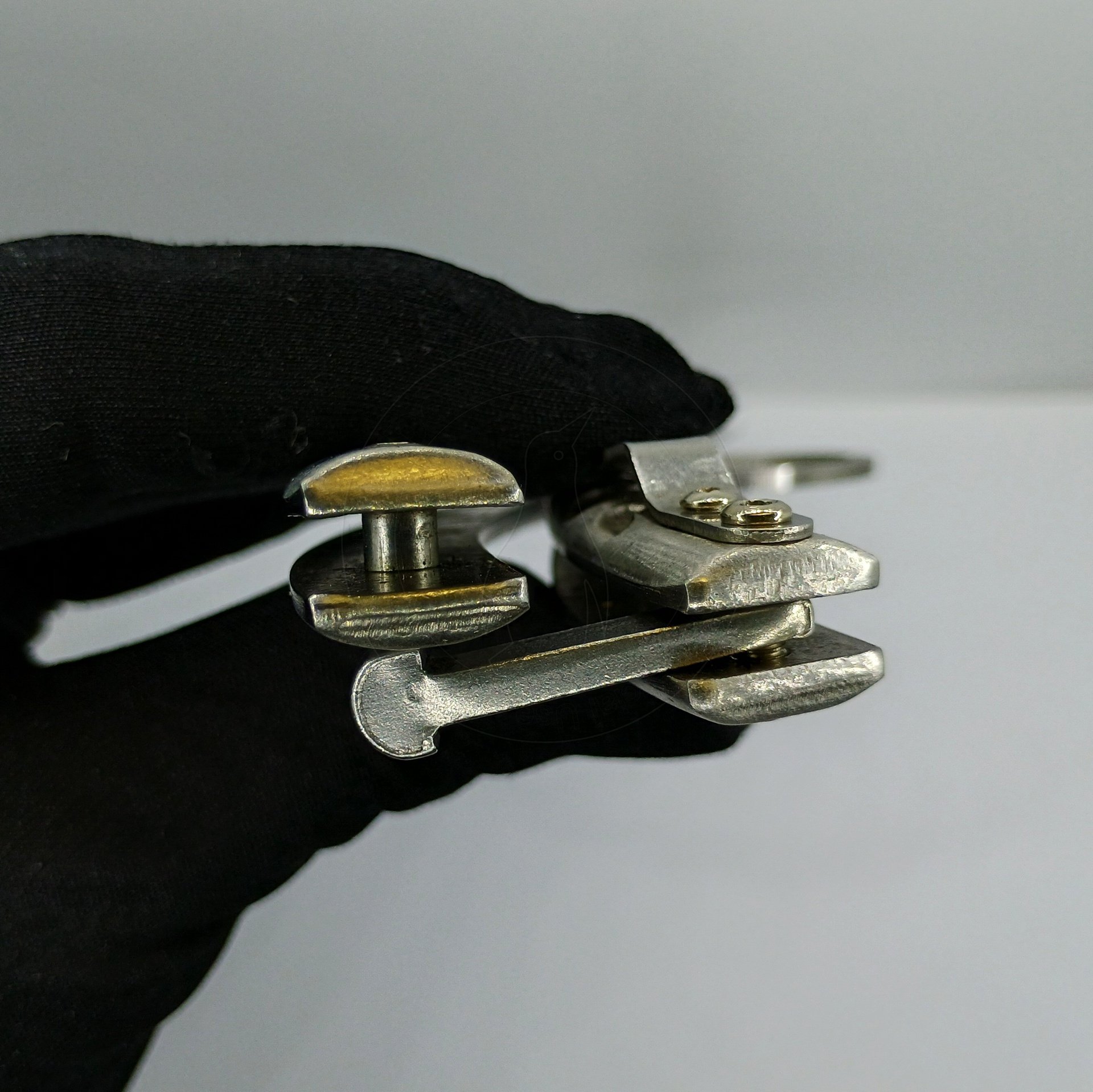
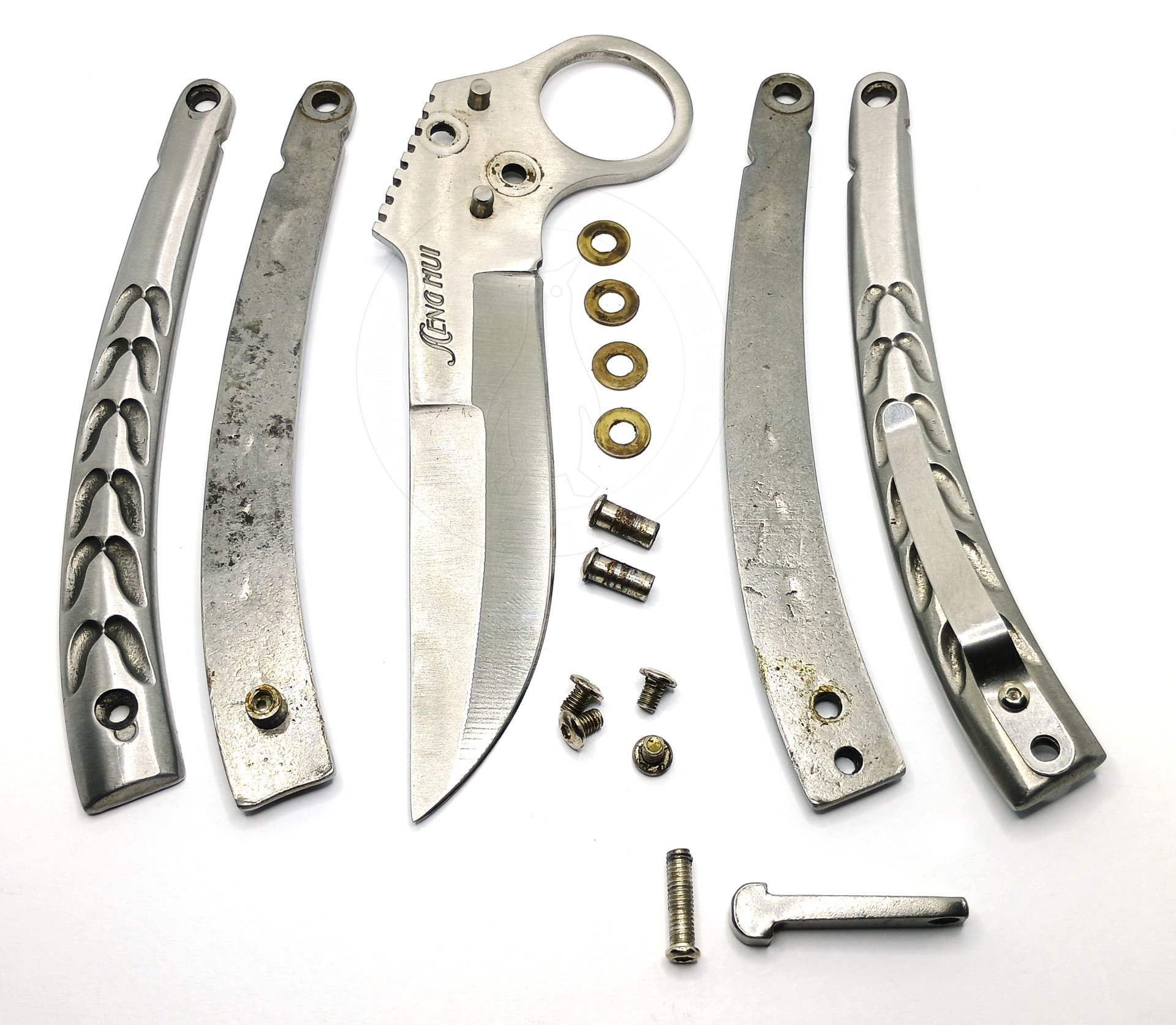


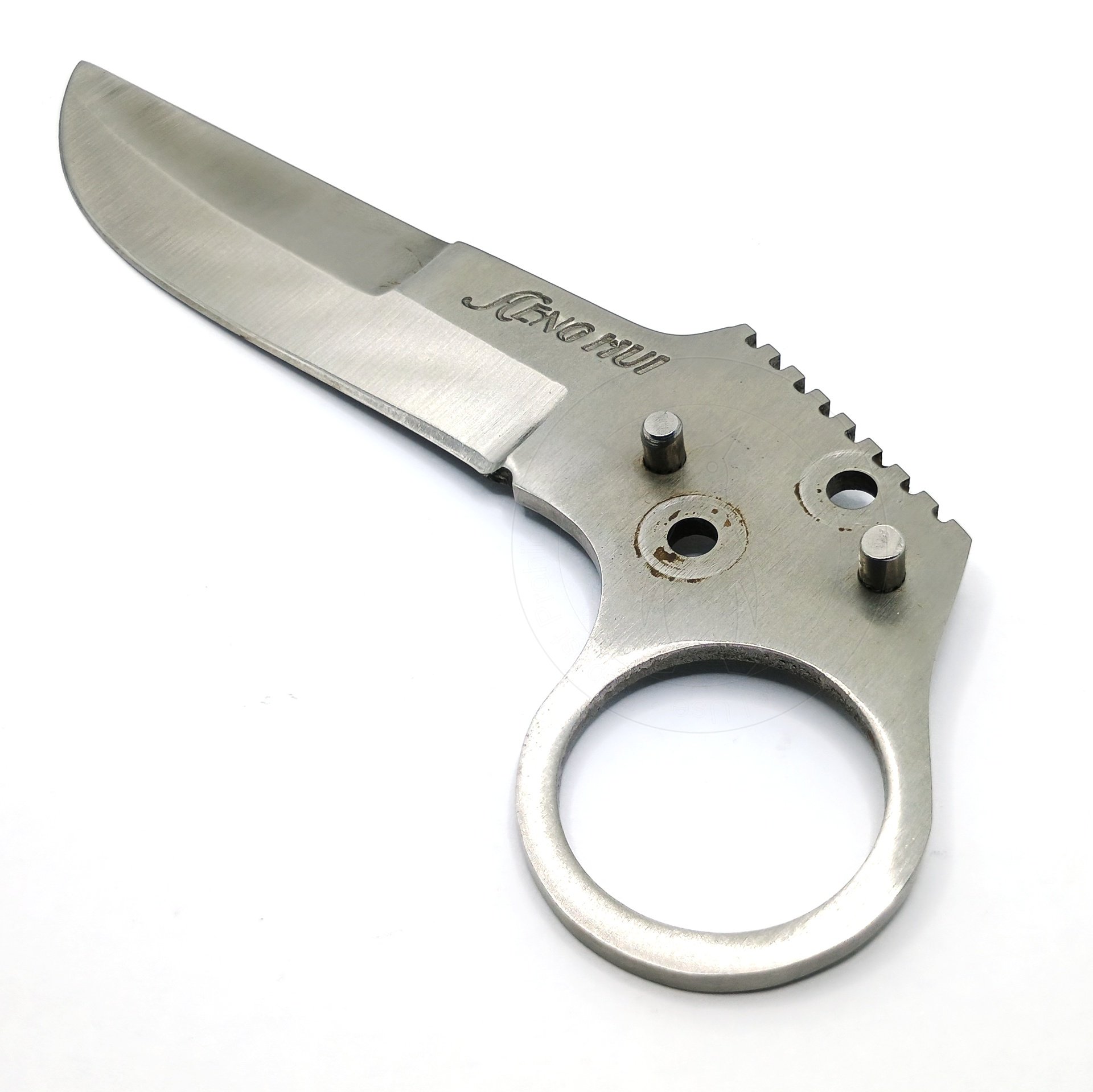
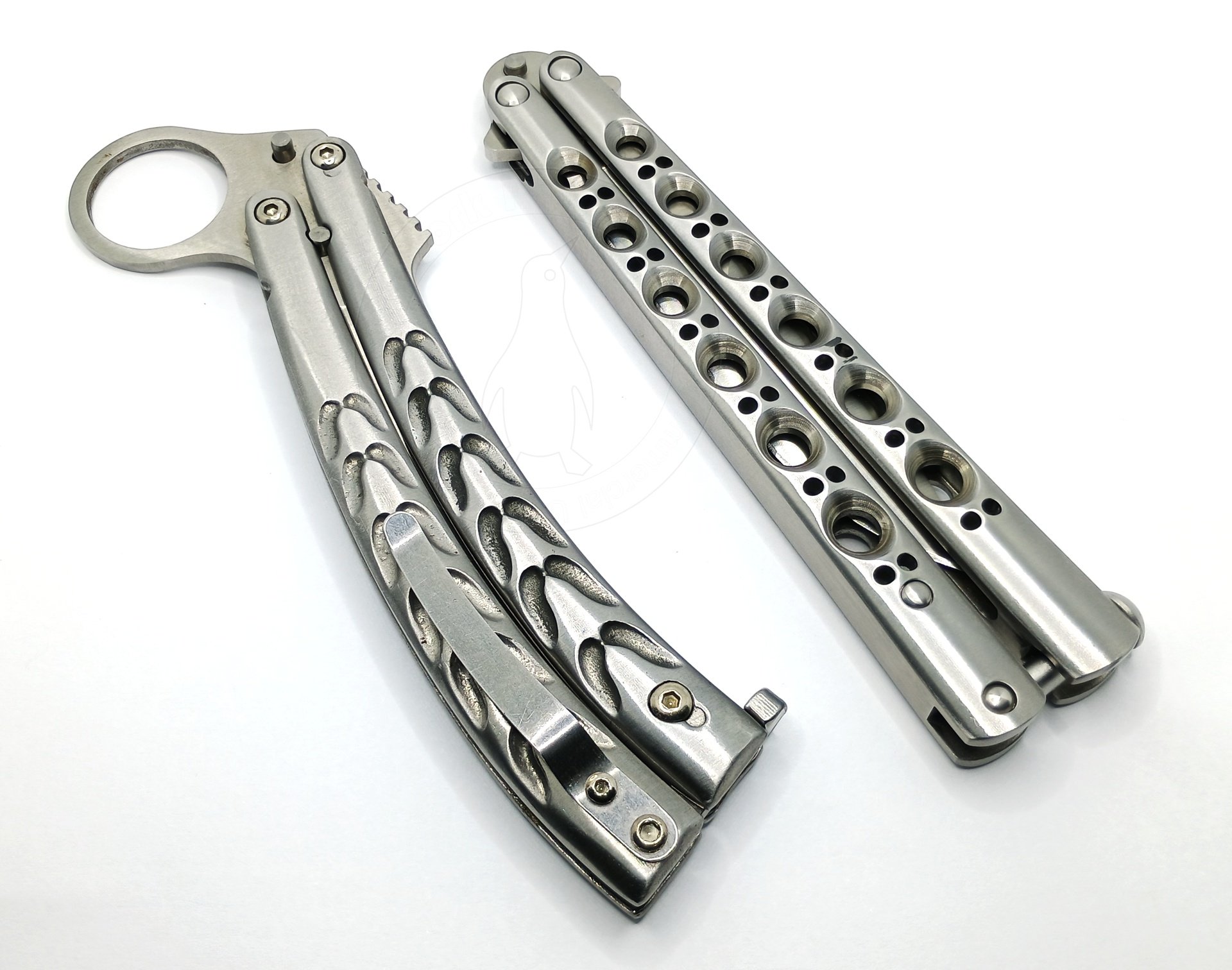
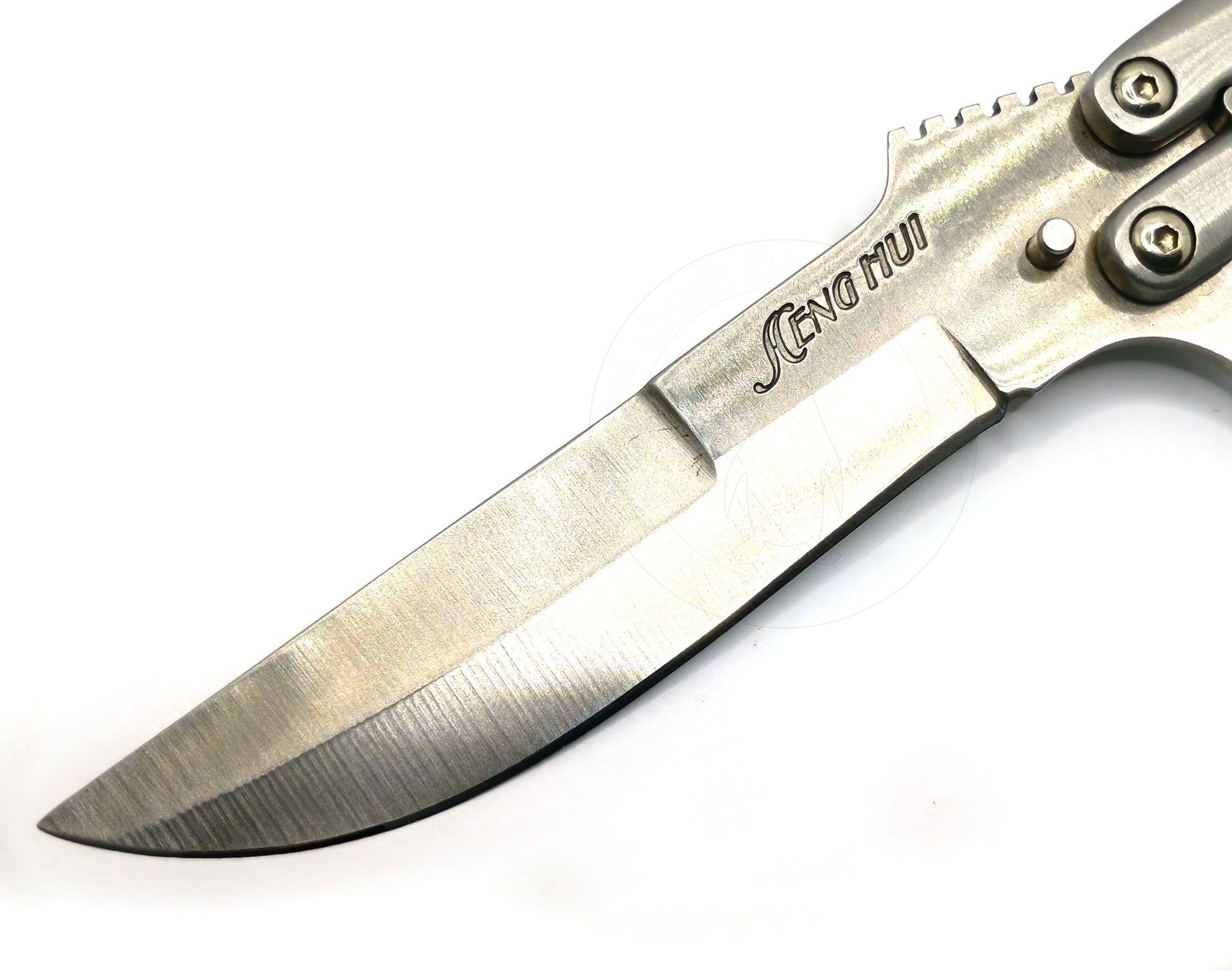
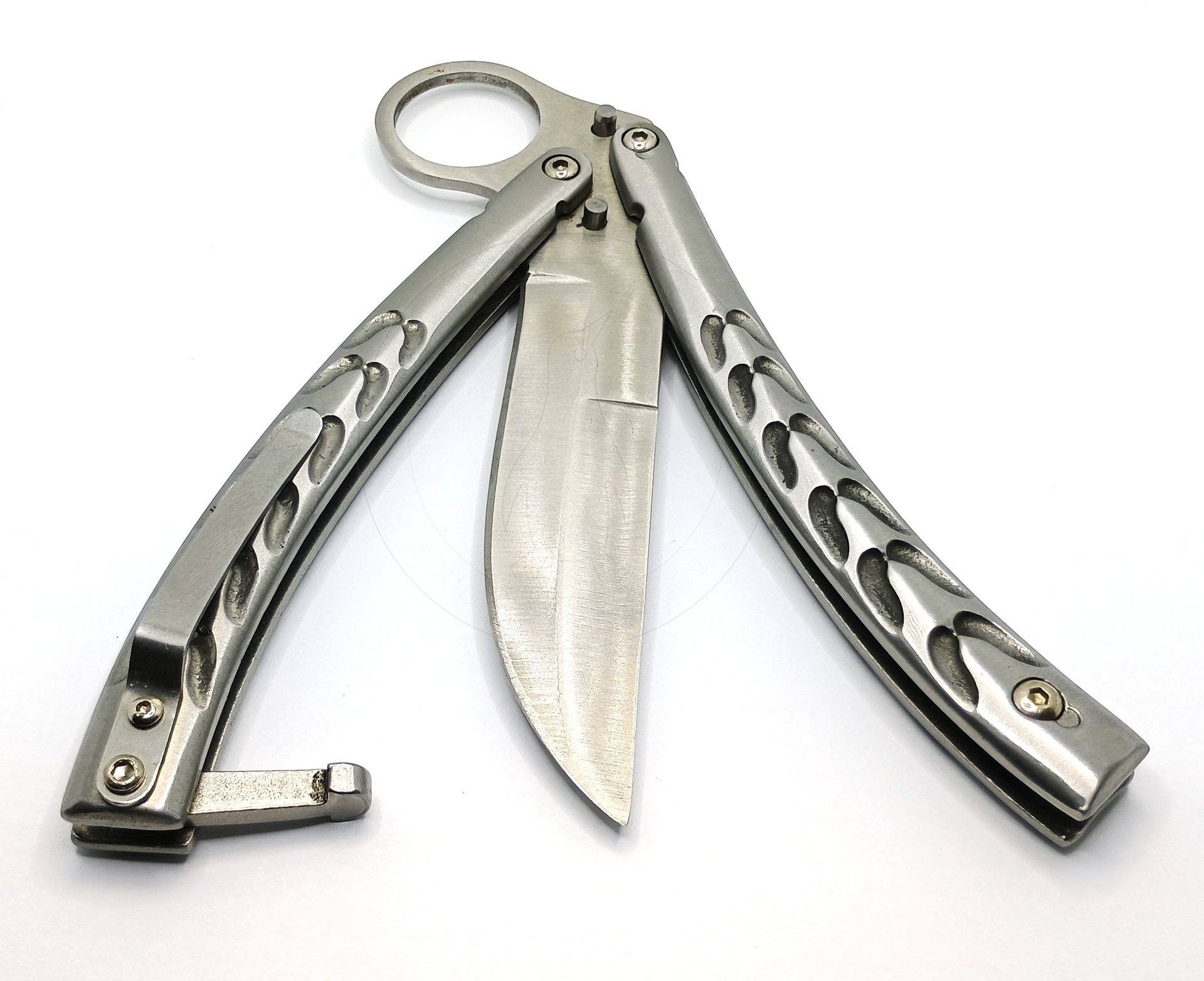

Guys, we may have a problem.
Well, I'm not really. I have tons of normal knives I could post about. Piles of the damn things. It just seems that to the nearest decimal point, everyone just wants to see the weird shit.
But I guess we haven't gotten into multi-tools or other EDC gadgets yet. Or swords. You guys want to see swords? Don't get me started.
Anyway, I will once again direct your attention to my Patreon, which remains parked at a glorious zero members, utterly dashing my hopes of ever striking it rich being a big name internet influencer in the cutlery sphere. (I guess if I really cared about that I could use traditional platforms and social media to chase greater than single digit numbers of readership rather than keep putting all my eggs in the Fediverse basket. But, um. Eww.)
Anyway, if you like this kind of thing your support will probably be the quickest way to enable me to obtain more stupid crap to show off, at least before payday. Pretty soon it's even going to have stickers, plus some other stuff. When I get around to it.